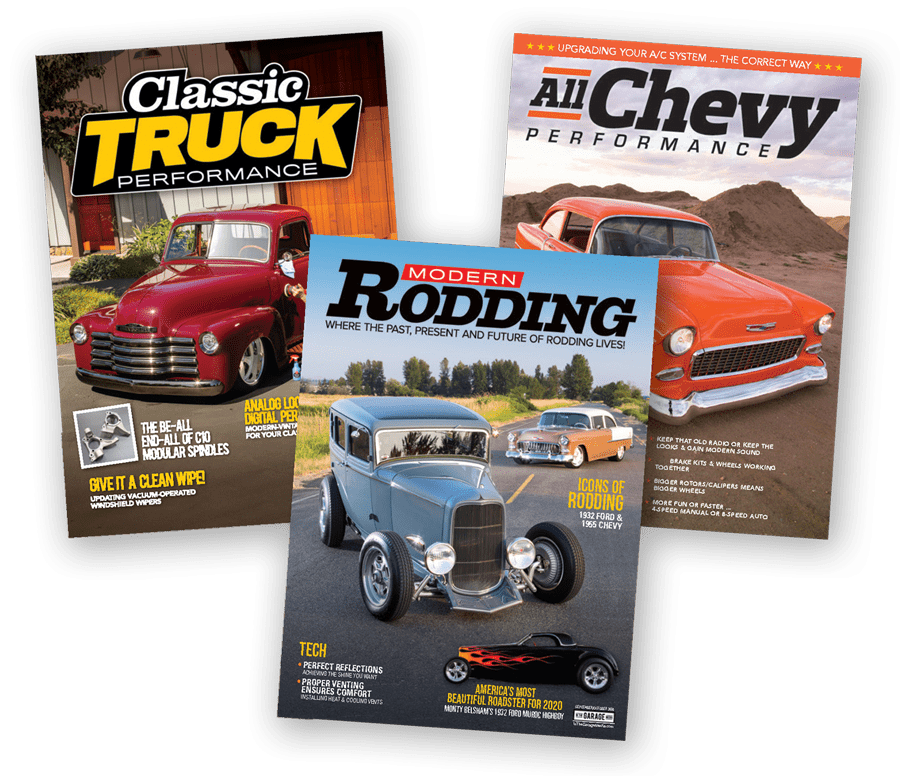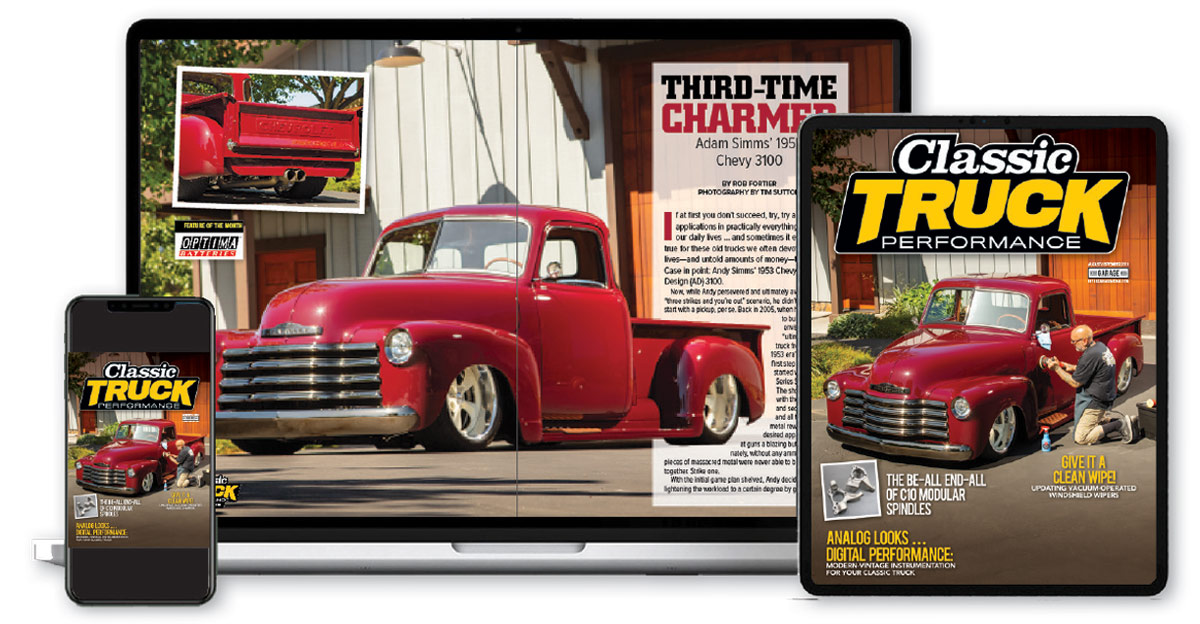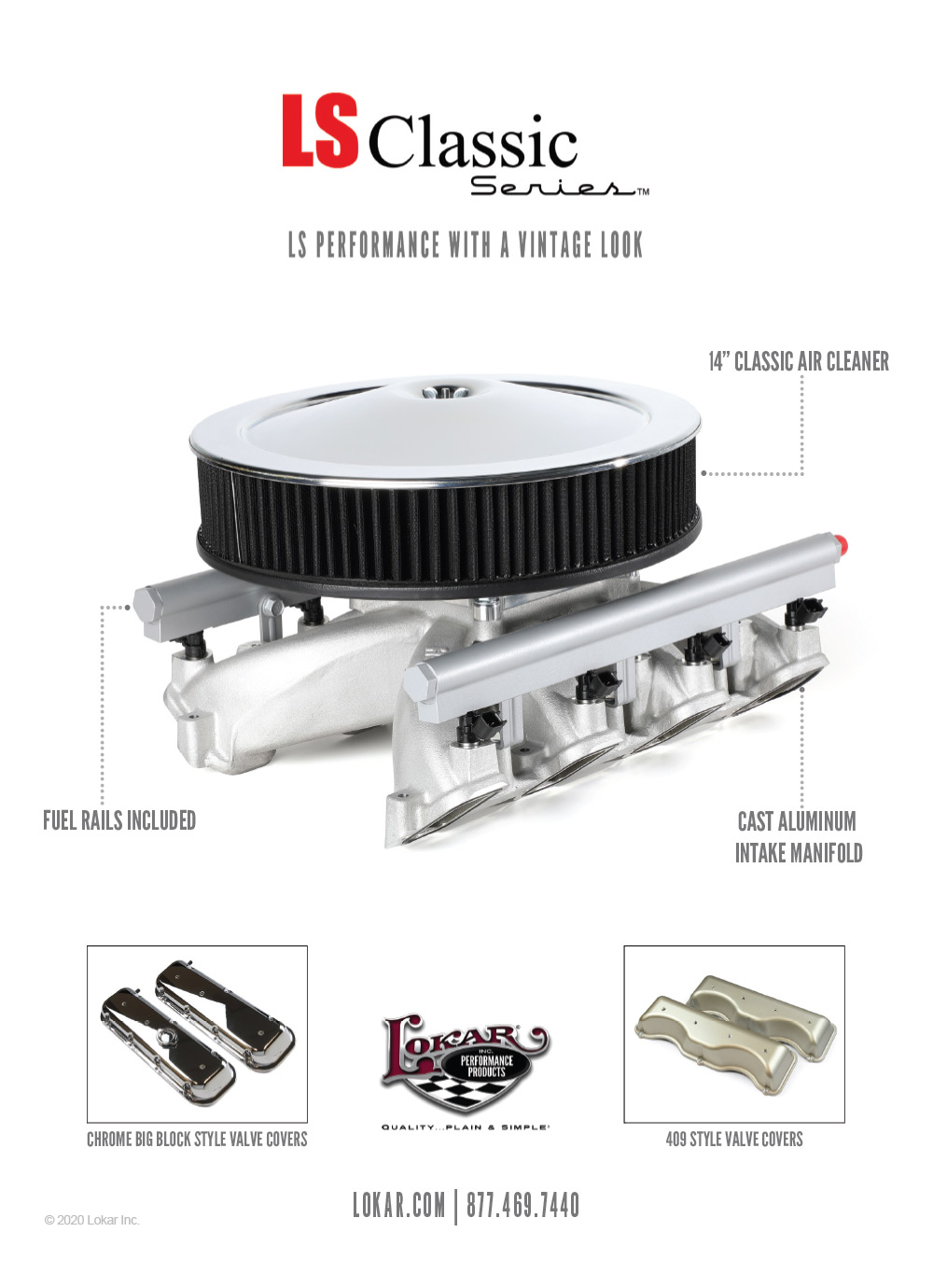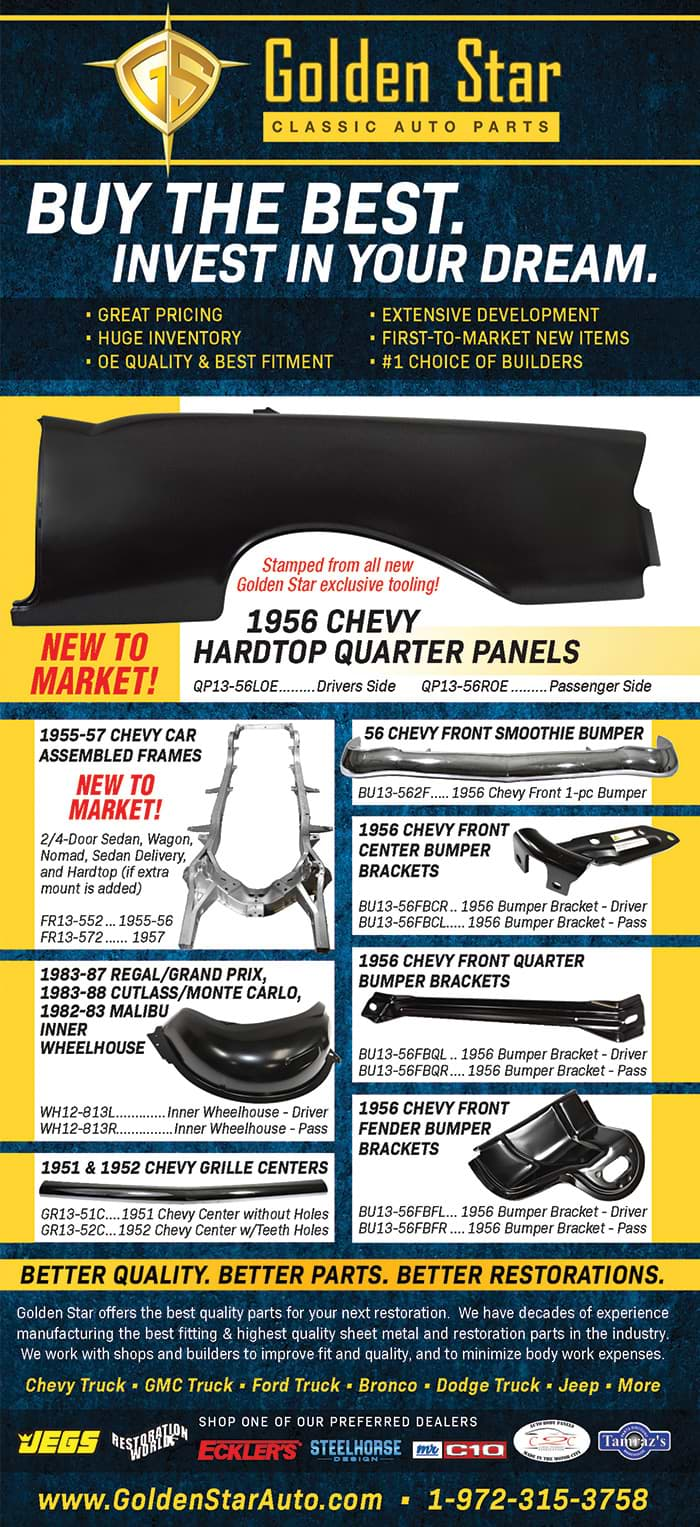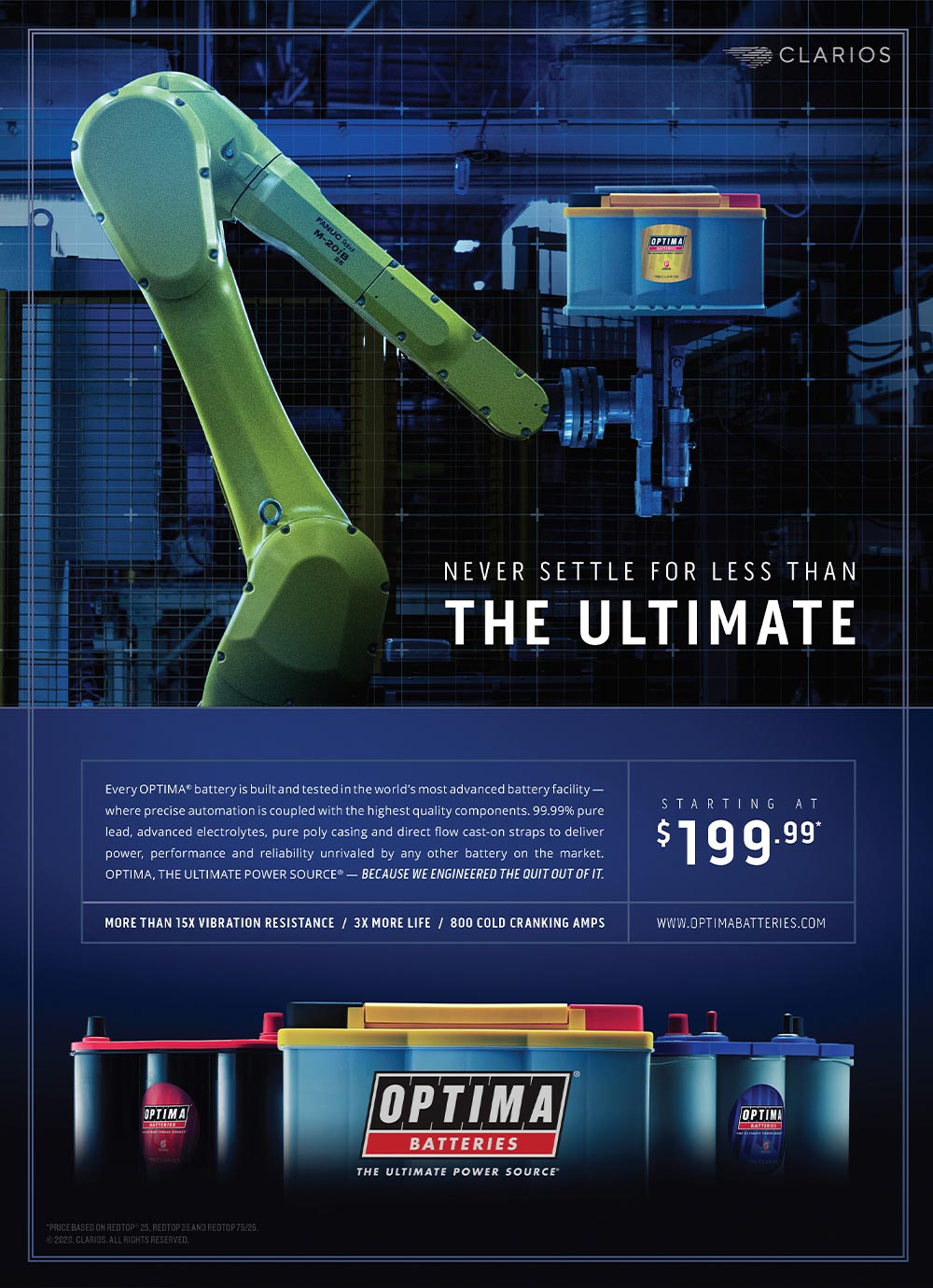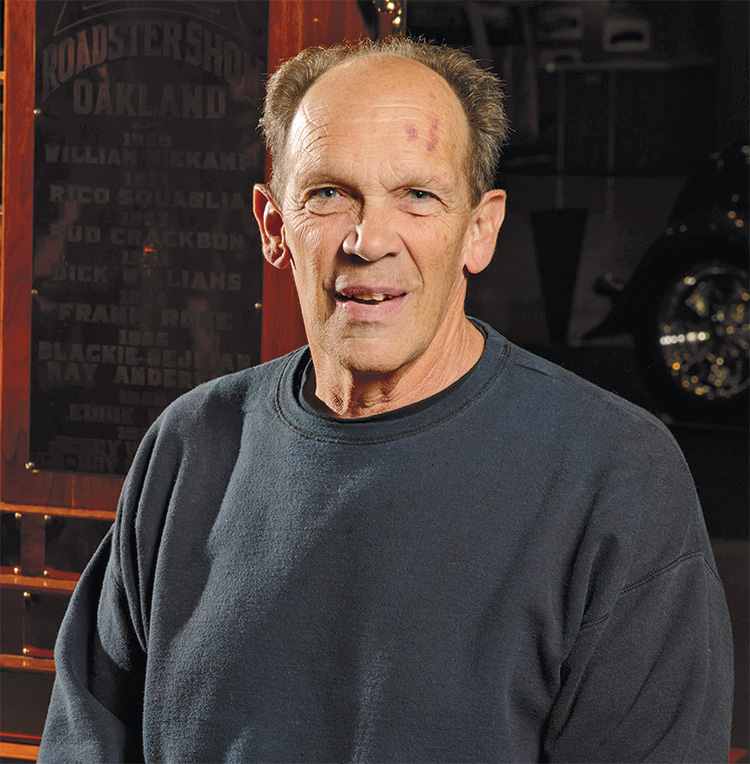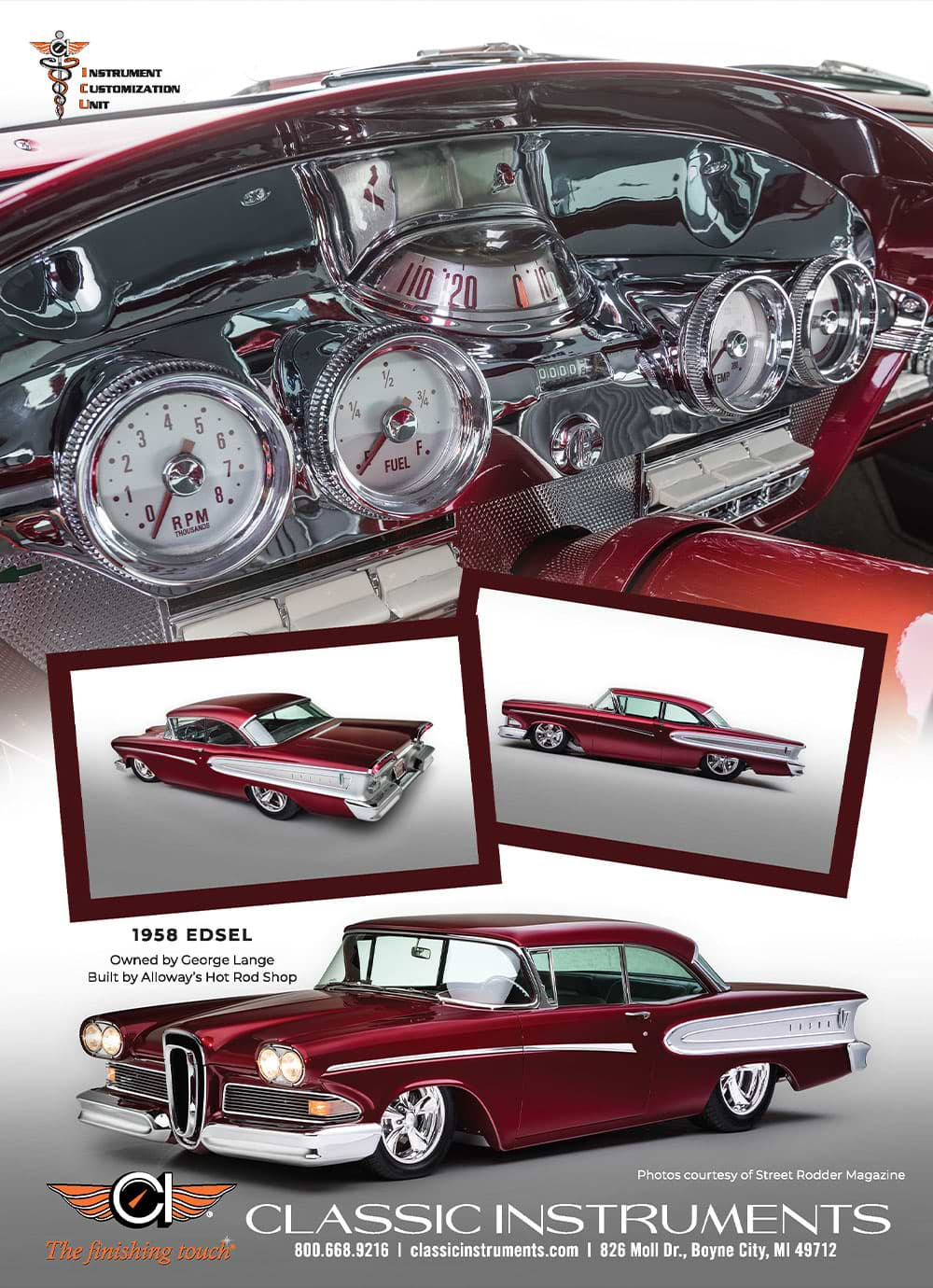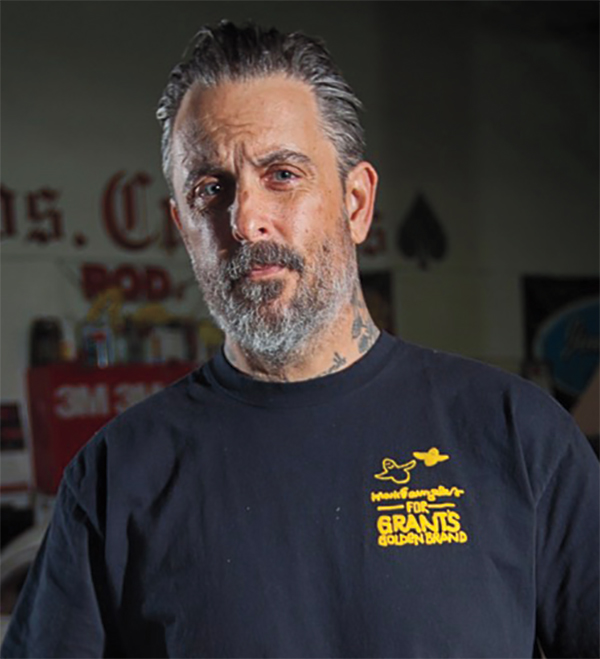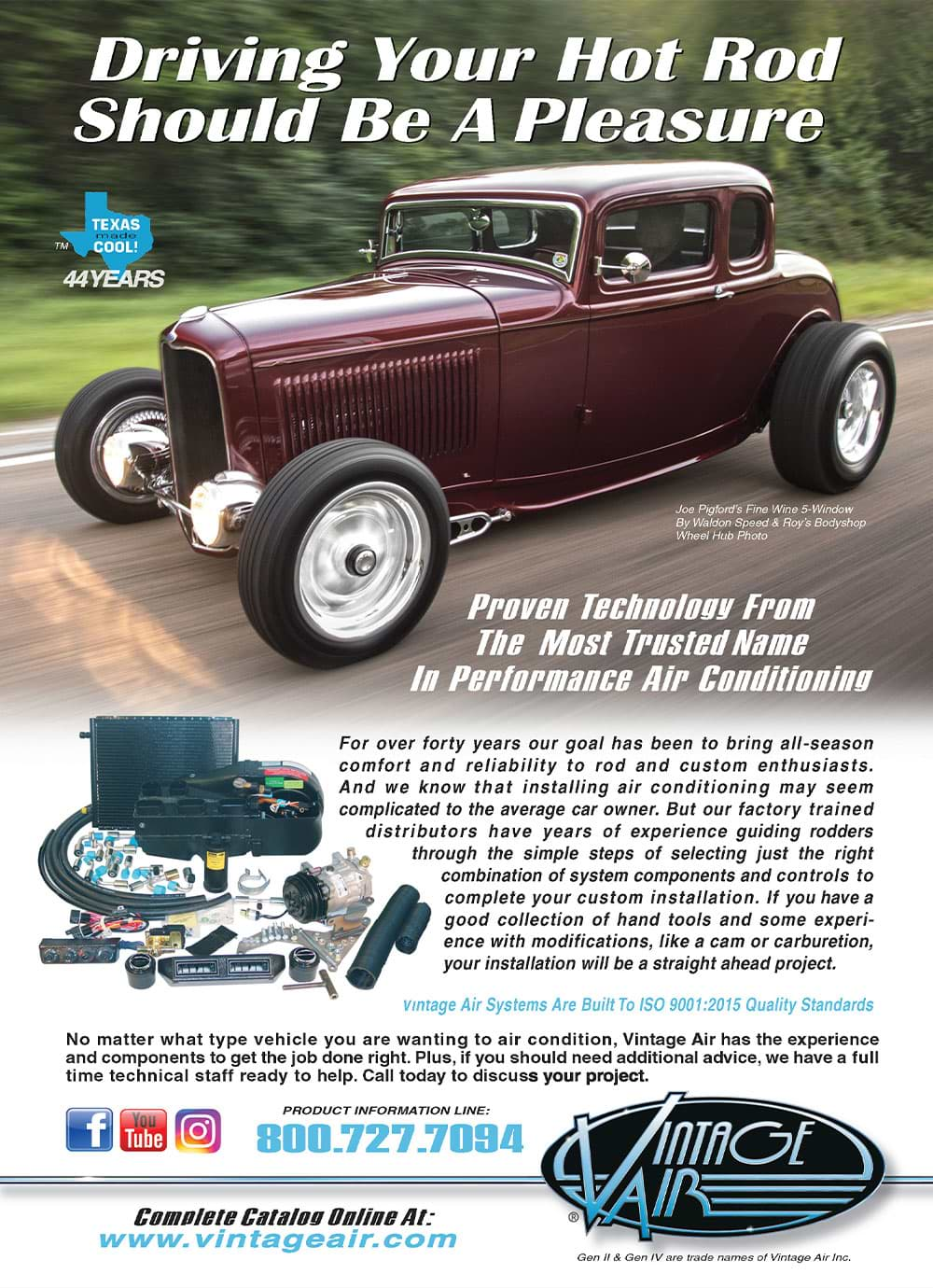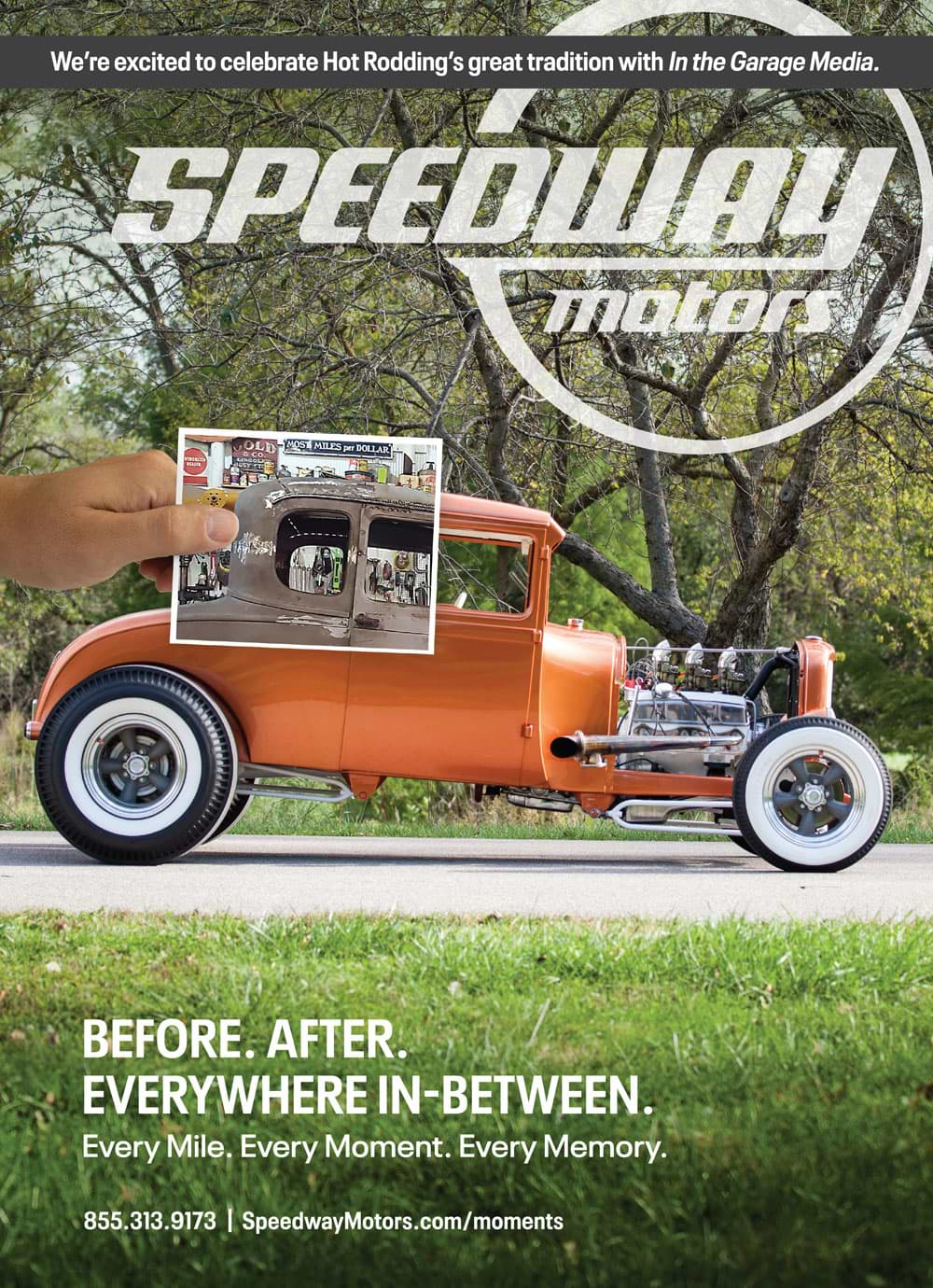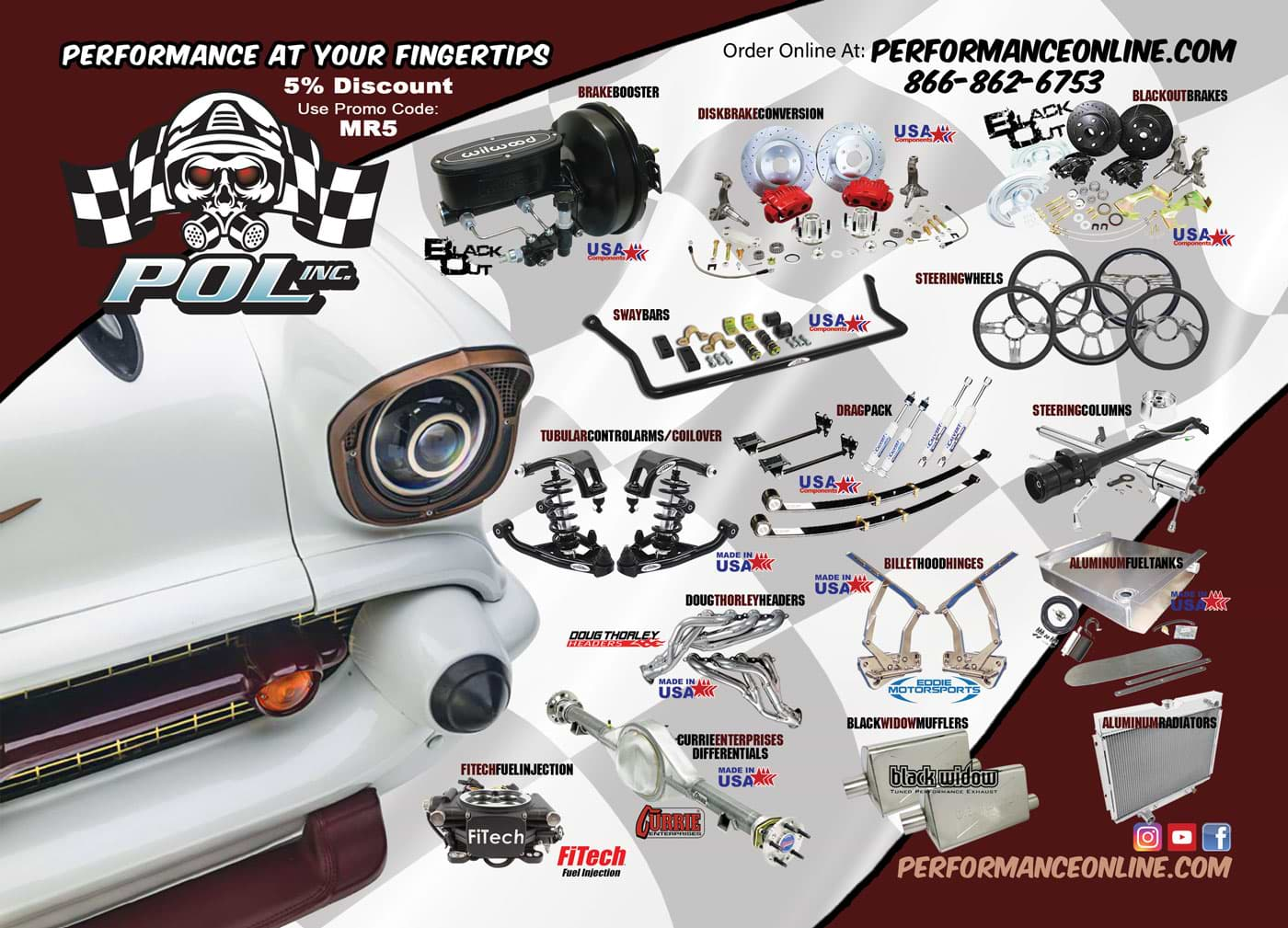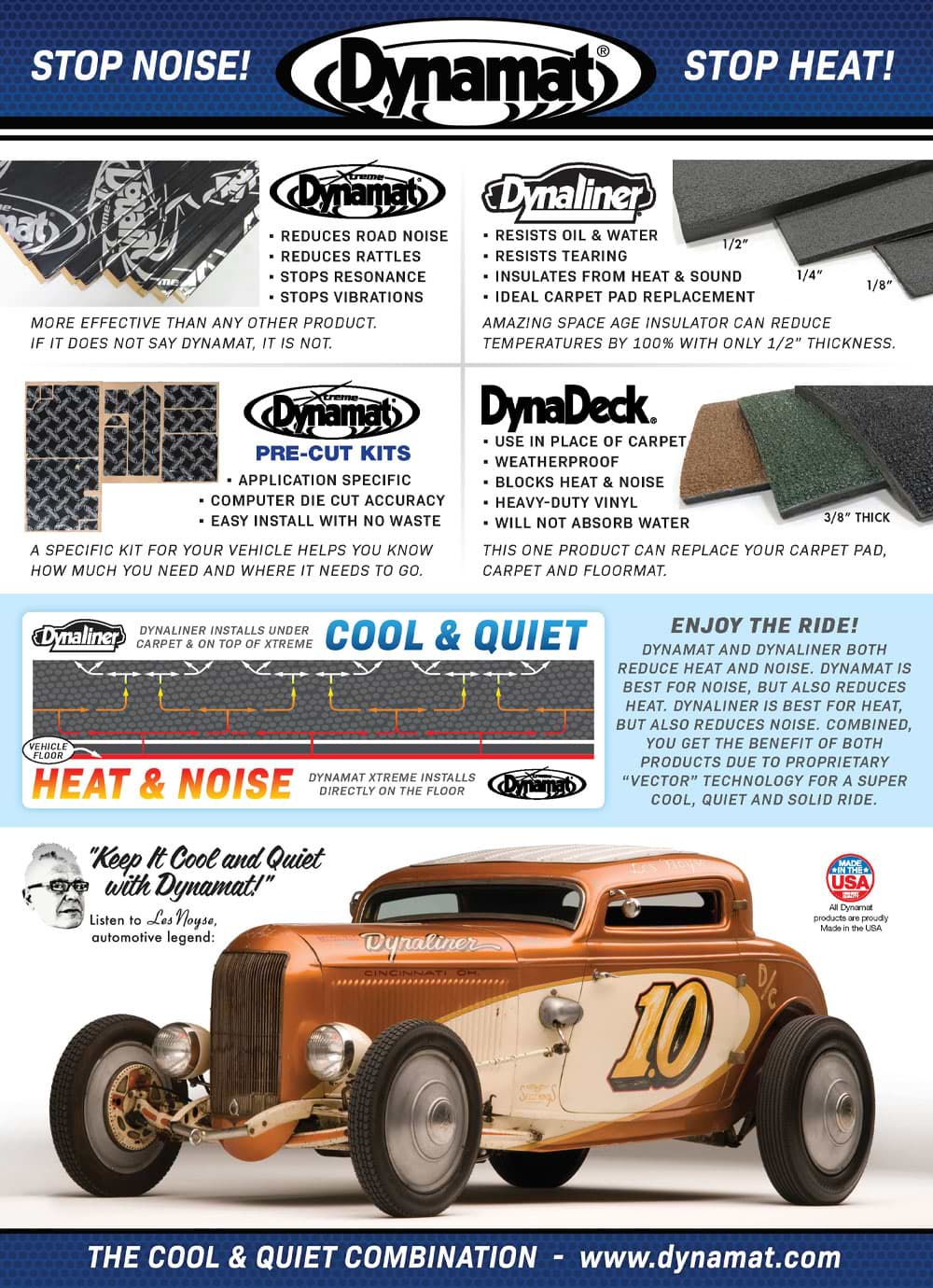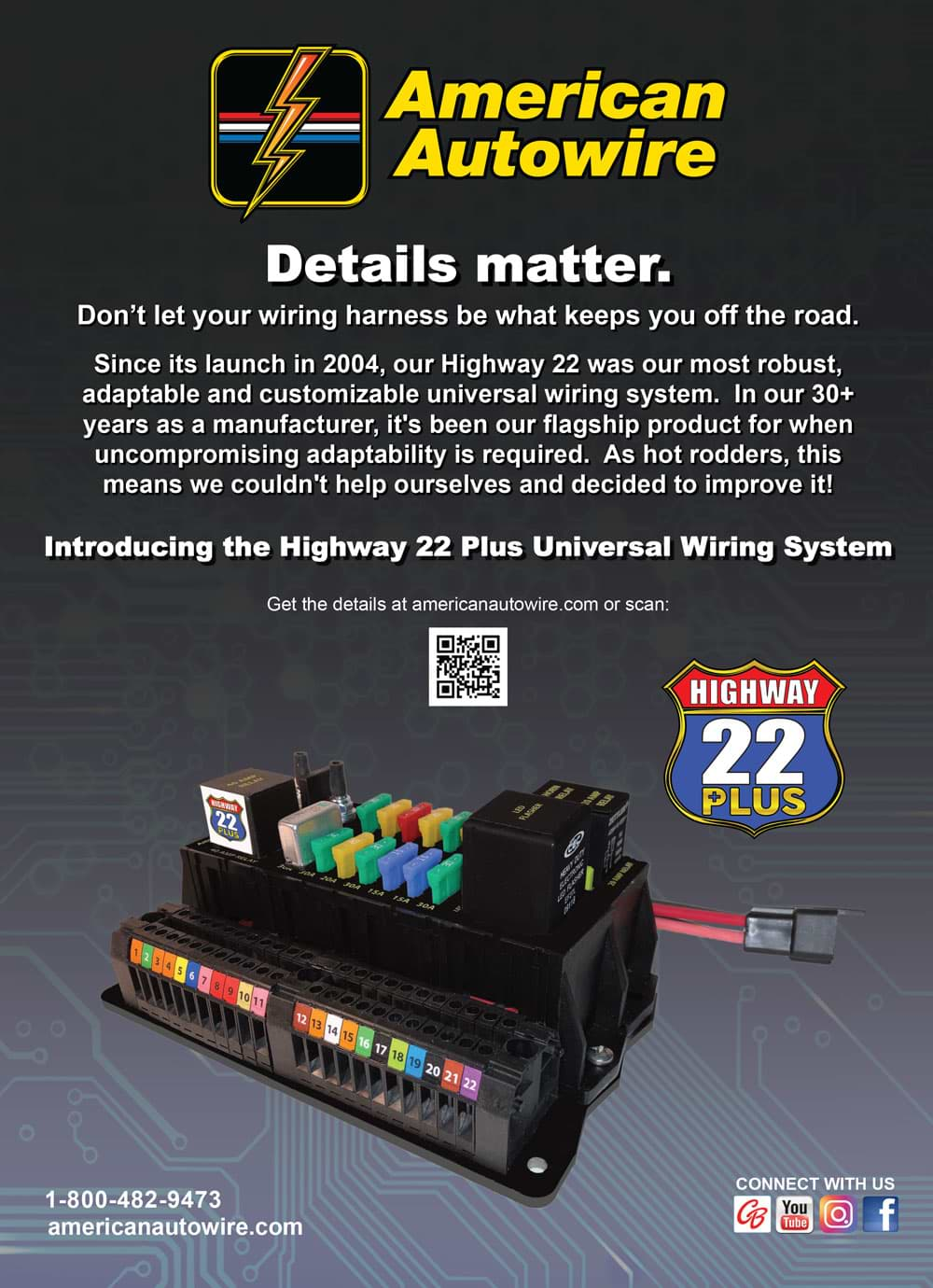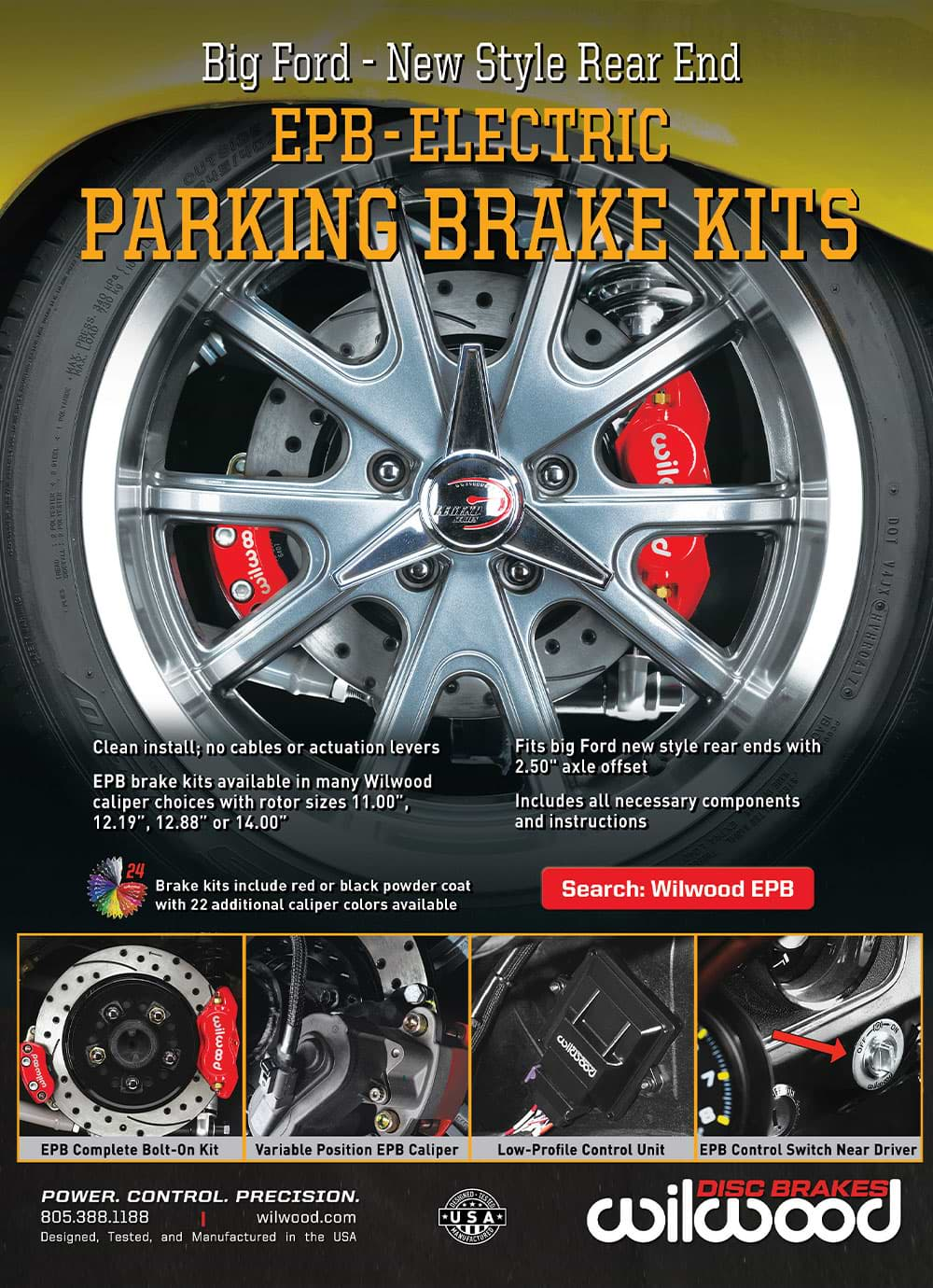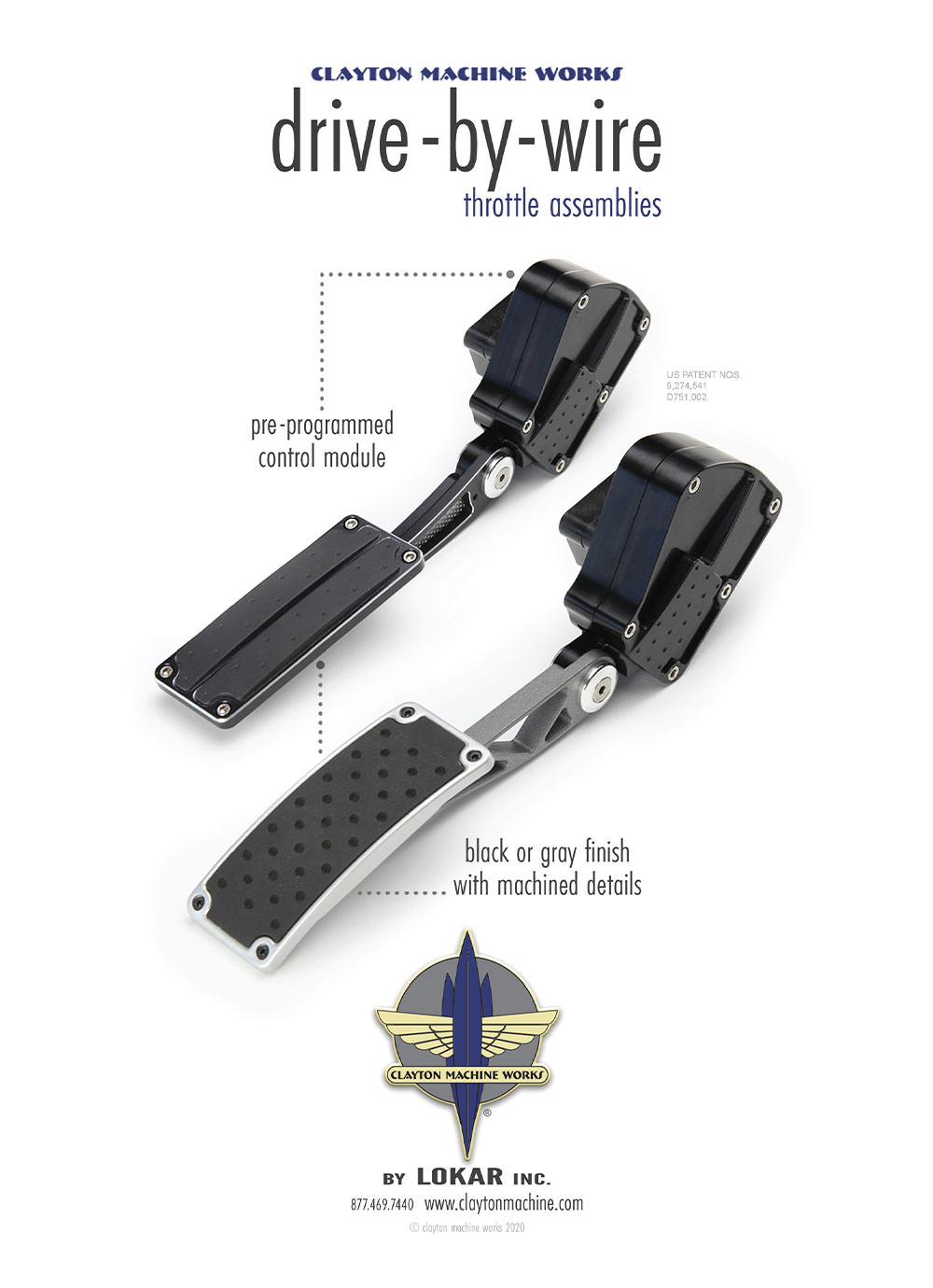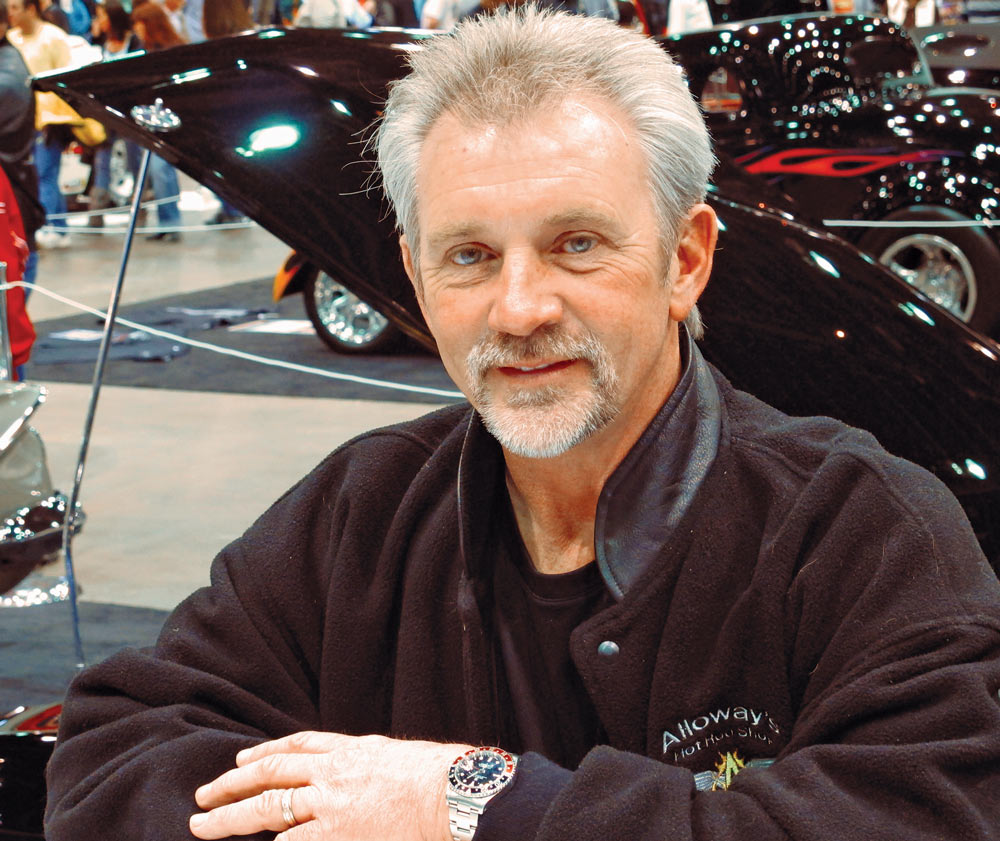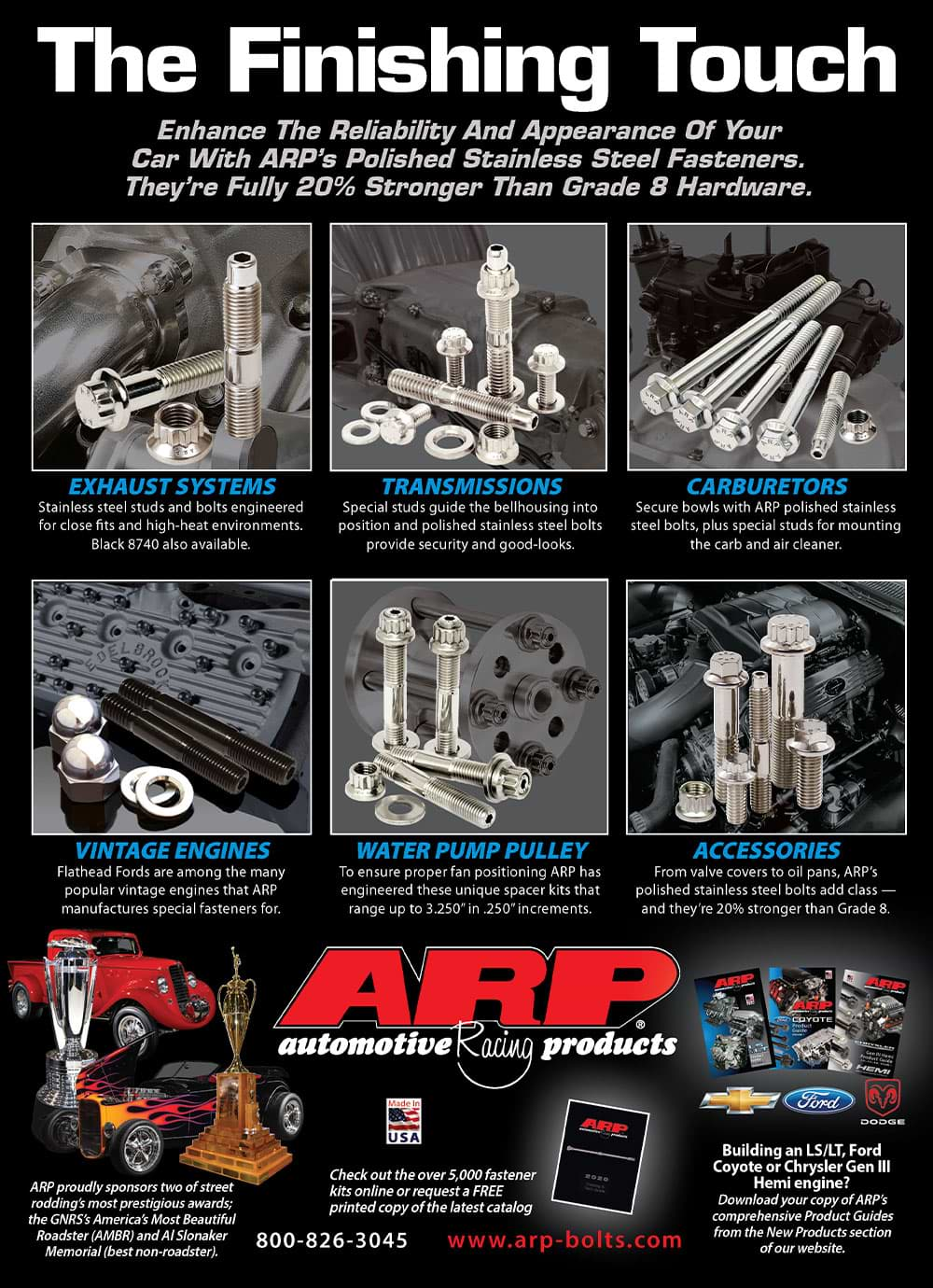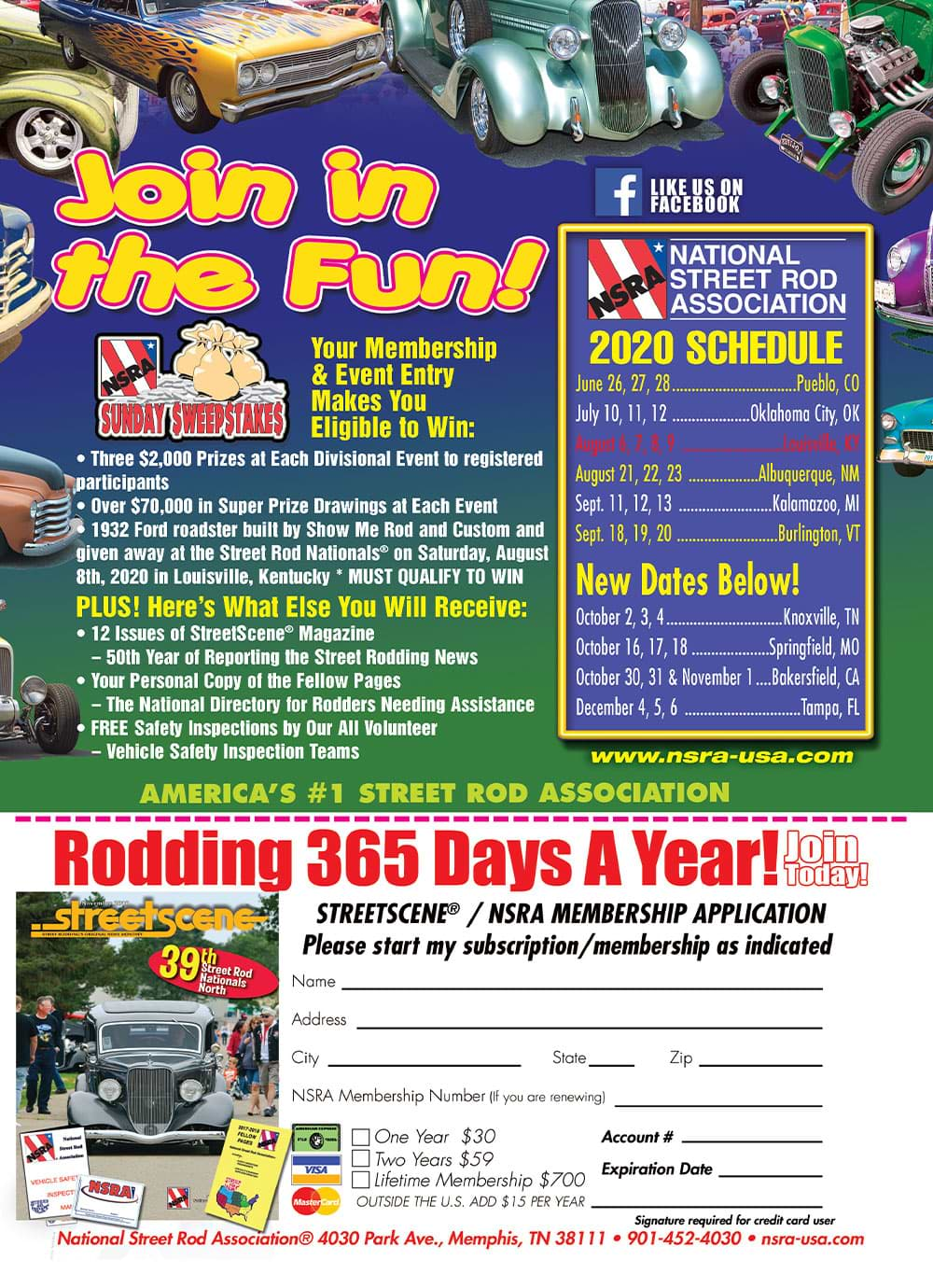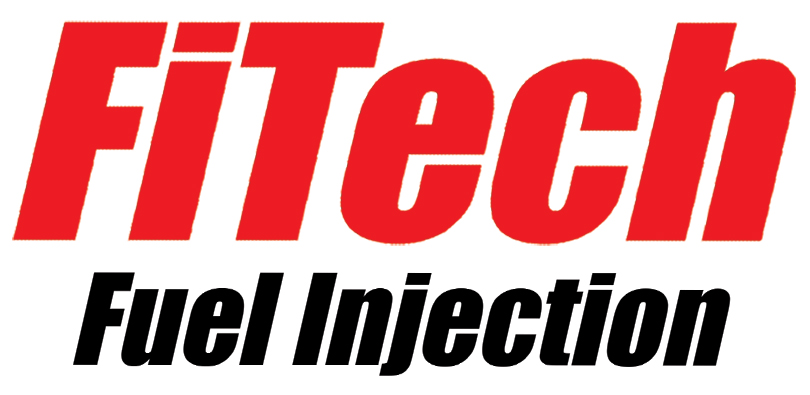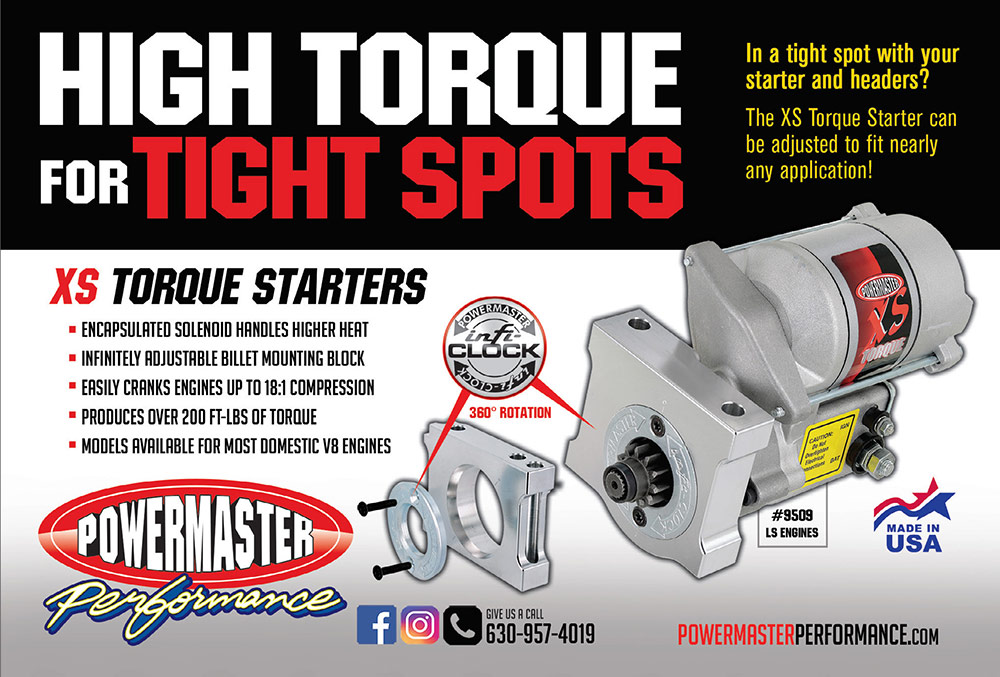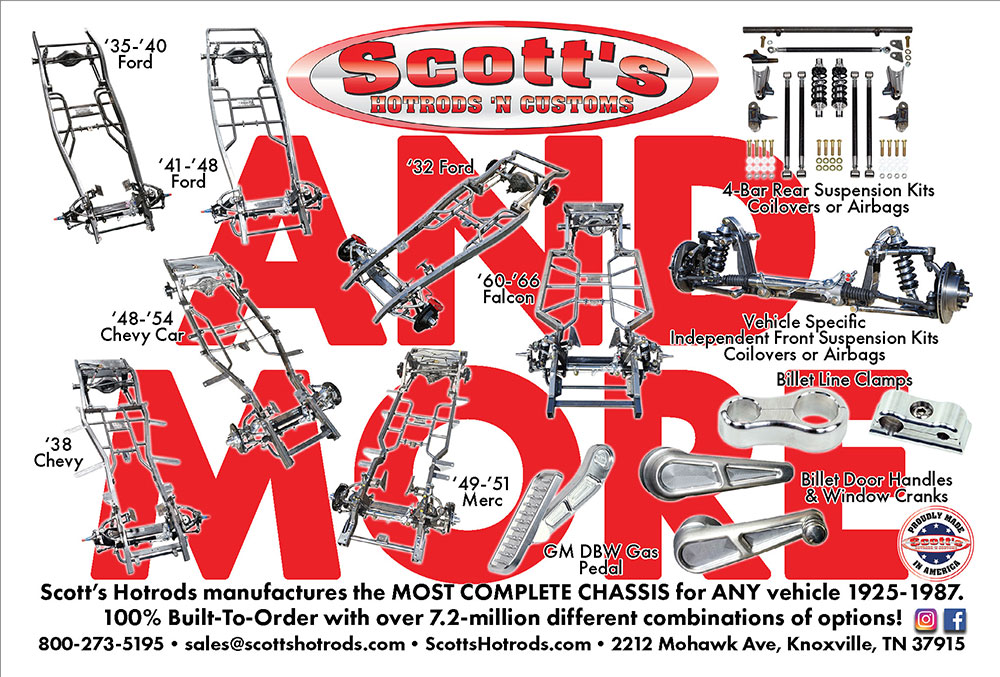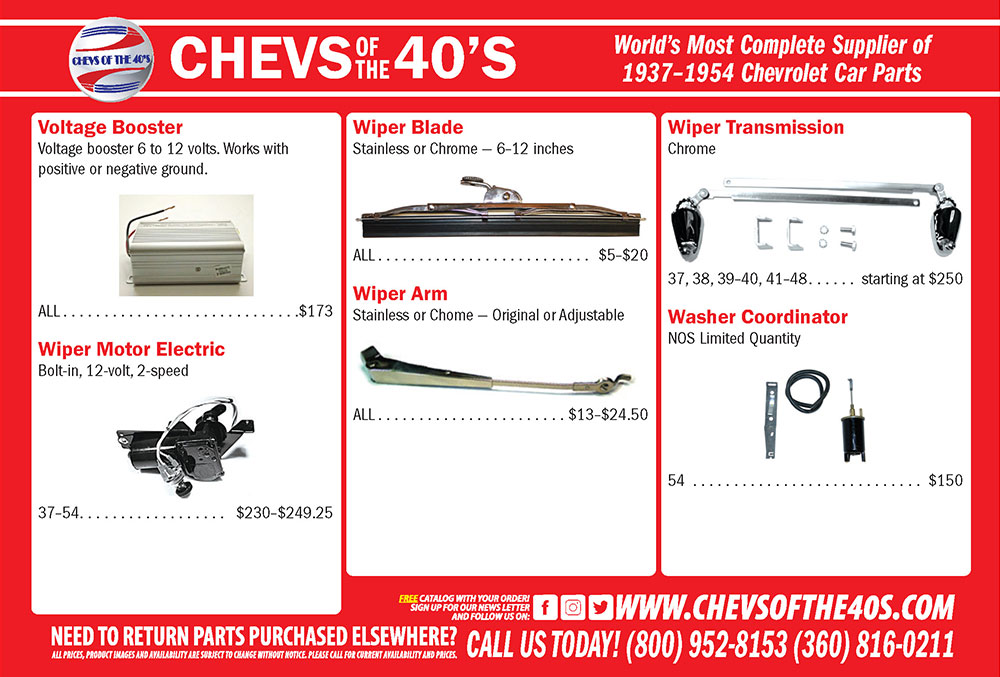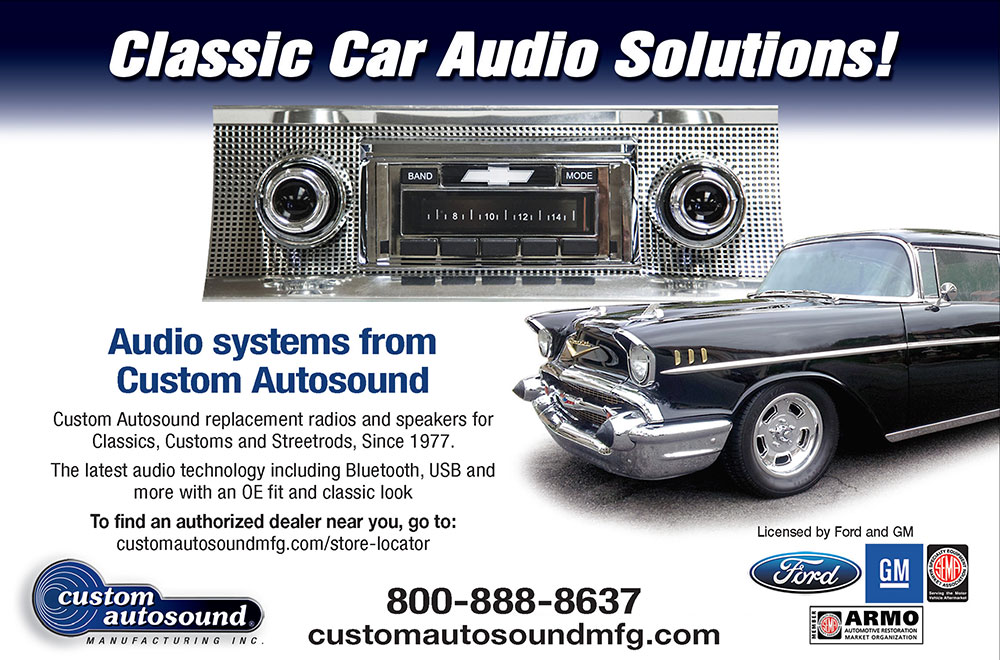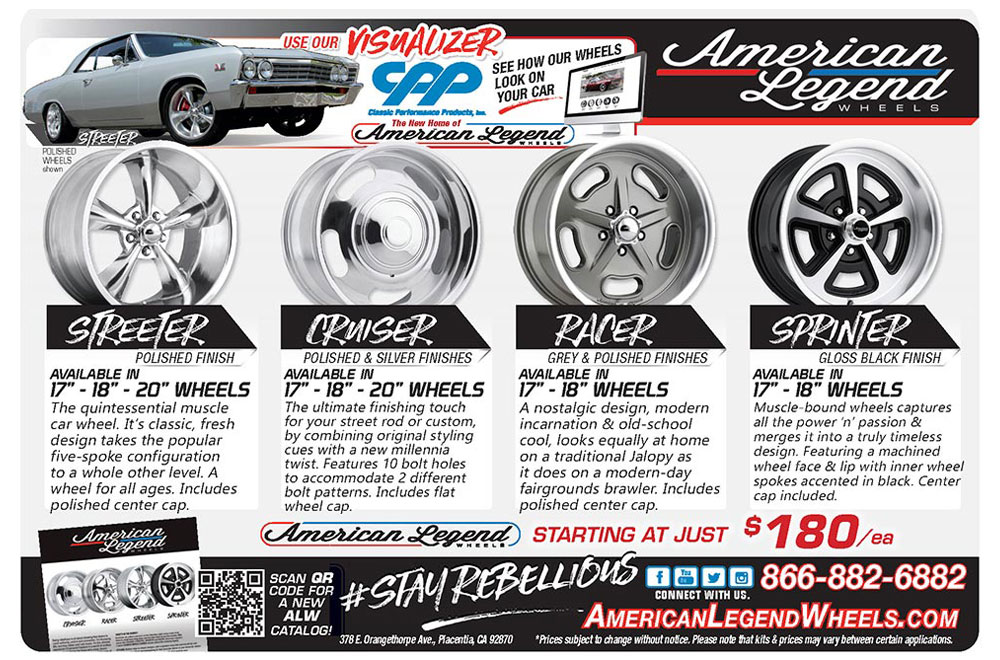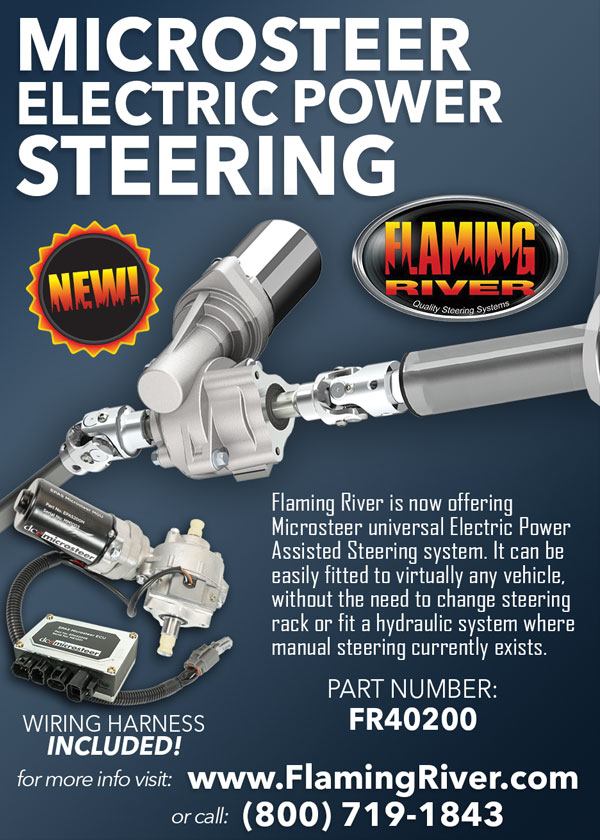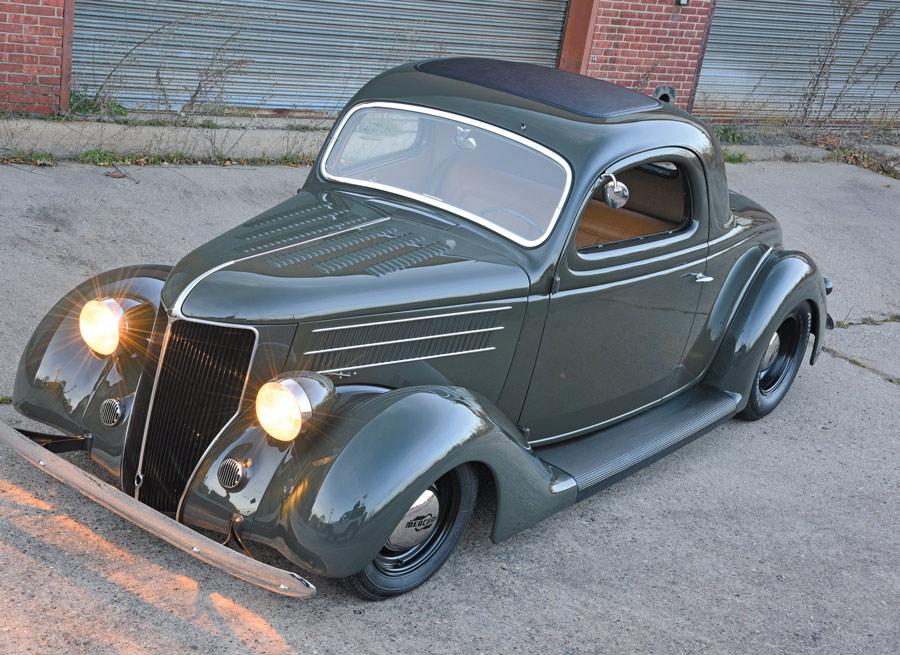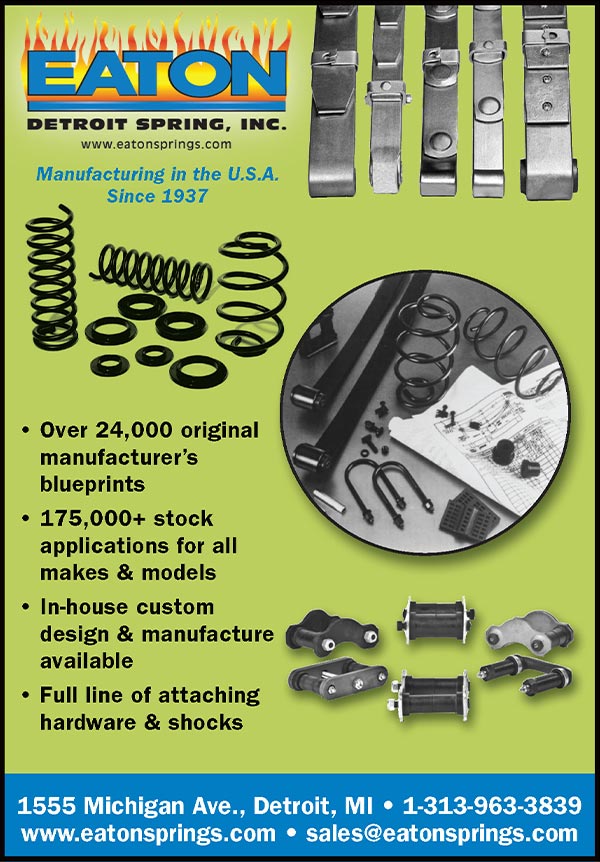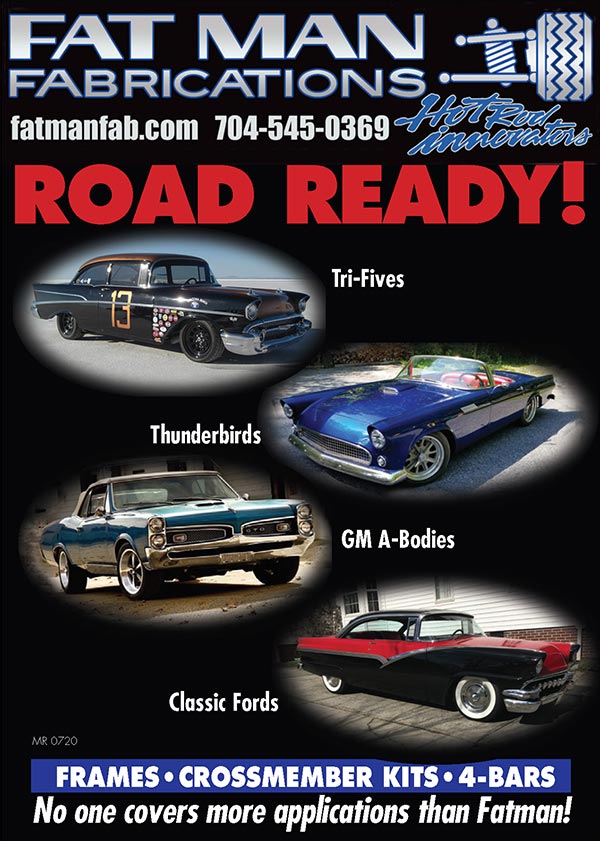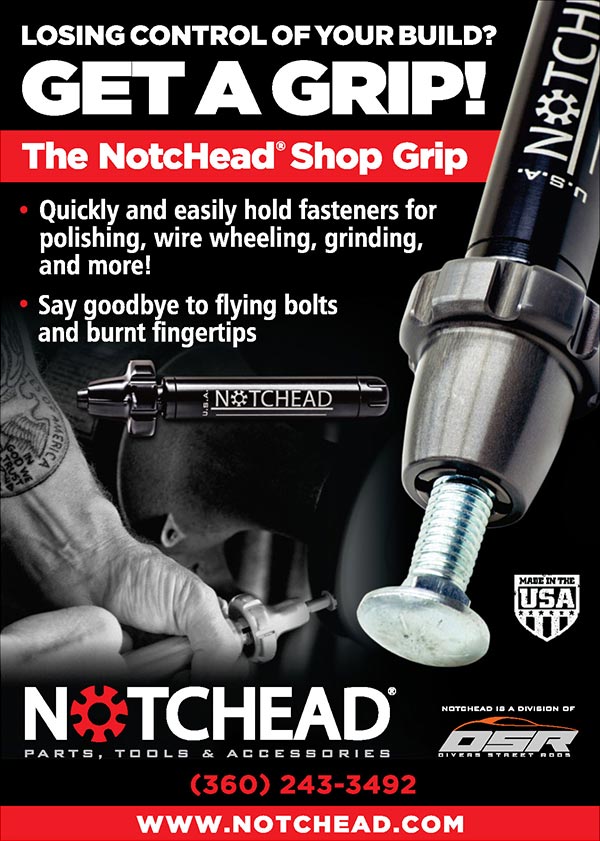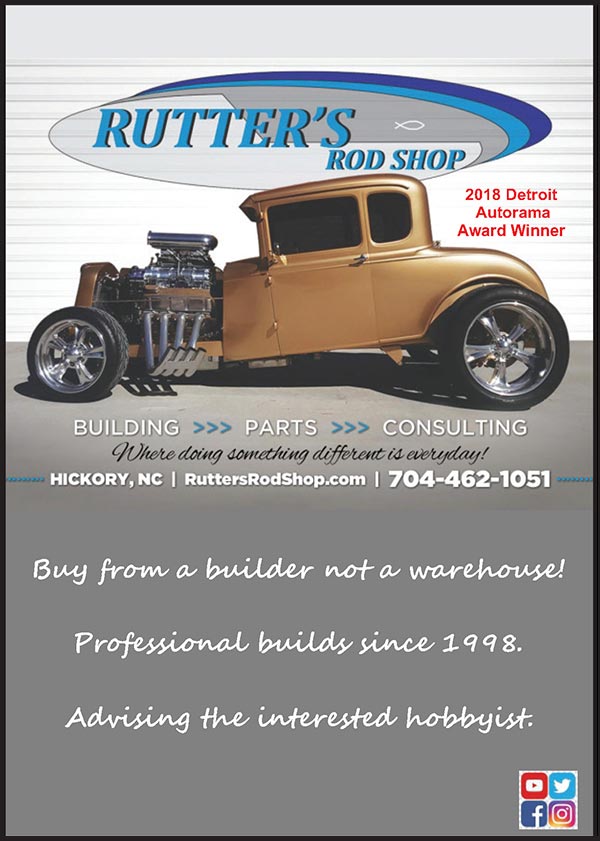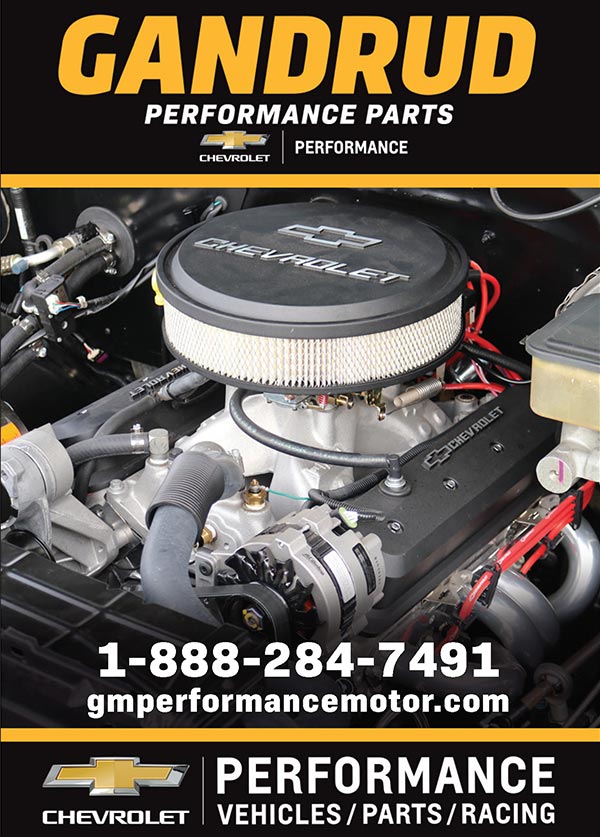
Rodding
1955 Chevy
- Perfect Reflections
Achieving The Shine You Want - Proper Venting Ensures Comfort
Installing Heat & Cooling Vents


- Perfect Reflections
Achieving The Shine You Want - Proper Venting Ensures Comfort
Installing Heat & Cooling Vents

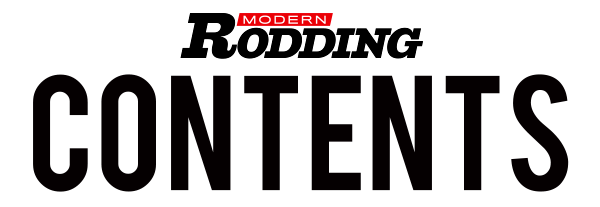
Brian Brennan
The Next Chapter
Rob Fortier
Parts Department
New Products
Ad Index
Those Supporting Our Industry
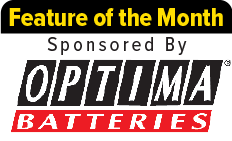

1955 Chevy Becomes More Than Expected
AMBR
Four Letters That Tell a Story … America’s Most Beautiful Roadster
Ford For All Time
This 1968 Mustang Ranks High on the Growing List of Iconic Blue Ovals
Twist Of Fate
This 1936 Ford Coupe is All About a Special Vibe
It can be said that the 1932 Ford and the 1955 Chevy are iconic hot rods of their generations. What better examples than the Deuce Fordor highboy sedan belonging to Don Sangster and the Tri-Five 1955 Chevy belonging to Mick Blaine.
Photography by Chris Shelton
A Lot of Knowledge Followed By a Lot of Effort
It’s As Simple As Hot & Cold
Installing Heat, Cool, and Defrost in Your Street Rod
Control Freak
CPP Control Arm Assemblies Will Simplify Your 1964 Chevelle Suspension Rebuild
Embossing Metal Panels
Adding Details to Your Metalworking
There are few awards more prestigious than the America’s Most Beautiful Roadster award and this year the 1932 Ford Muroc roadster belonging to Monty Belsham and reimagined from the ground up by Squeeg’s Kustoms took home the honors.
Photography by John Jackson
Orange, CA
nitroactive.net
Autobooks-Aerobooks
Burbank, CA
(818) 845-0707
autobooks-aerobooks.com
Manchester, CT
(860) 647-1353
www.nationalspeed.com
Hot Rod Paper Company
Youngstown, OH
(330) 506-6169
gadmak@aol.com
Birmingham, MI
(248) 646-2886
www.pasteiners.com
Graffiti Publications
Victoria 3450 Australia
http://www.graffitipub.com.au/
Nitroactive.net
Orange, CA
nitroactive.net
Autobooks-Aerobooks
Burbank, CA
(818) 845-0707
autobooks-aerobooks.com
National Speed Center Inc.
Manchester, CT
(860) 647-1353
www.nationalspeed.com
Hot Rod Paper Company
Youngstown, OH
(330) 506-6169
gadmak@aol.com
Pasteiner’s
Birmingham, MI
(248) 646-2886
www.pasteiners.com
Graffiti Publications
Victoria 3450 Australia
http://www.graffitipub.com.au/
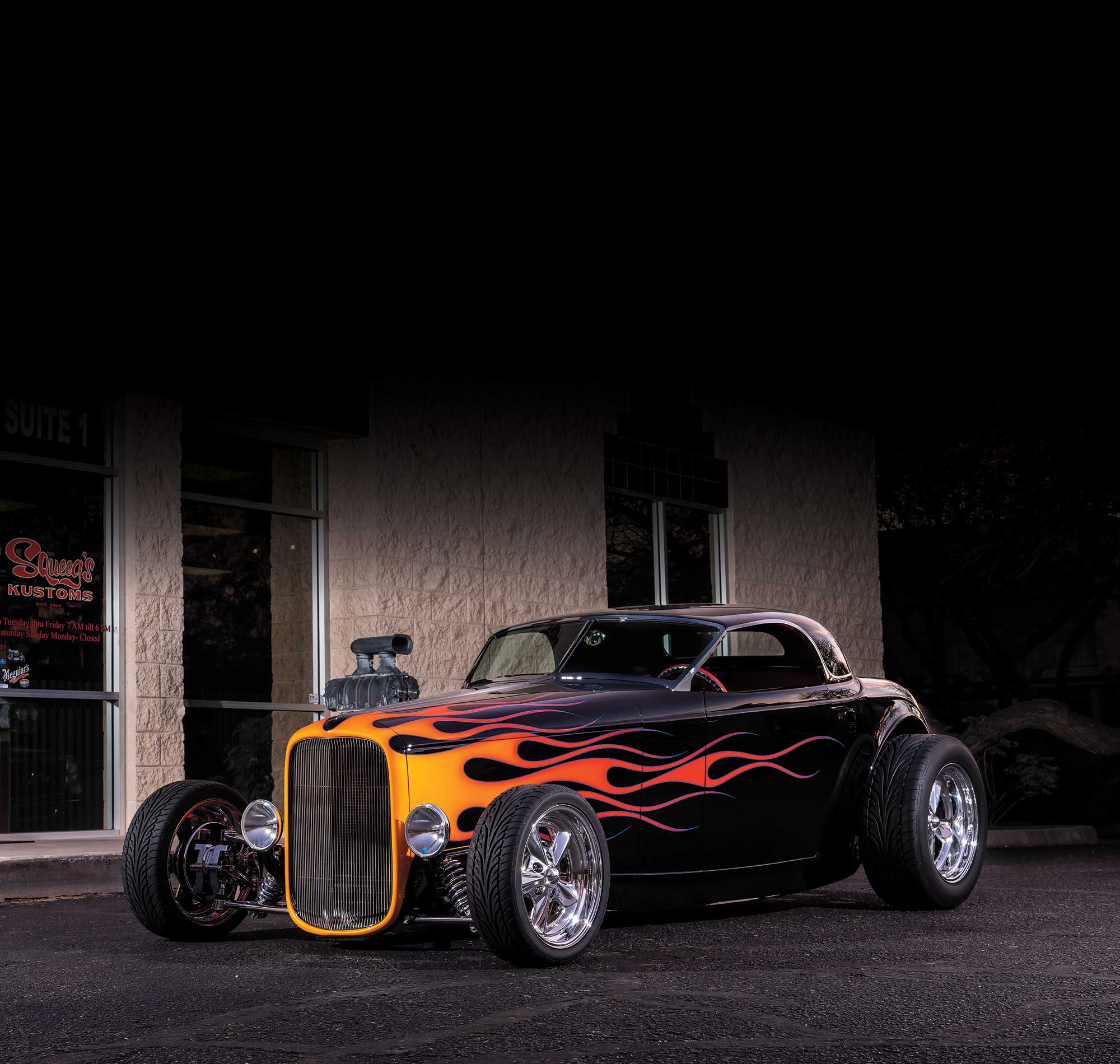

EDITORIAL DIRECTOR / EDITOR
SENIOR EDITOR
PUBLISHER
ASSOCIATE PUBLISHER & OPERATIONS MANAGER
ART DIRECTOR
Sarah Gonzales – Copy Editor
Rodney Bauman, Gerry Burger, Tommy Lee Byrd, Ron Ceridono, Michael Christensen, Ron Covell, Grant Cox, John Drummond, Eric Geisert, Joe Greeves, John Jackson, Barry Kluczyk, Scotty Lachenauer, Nick Licata, Ryan Manson, Josh Mishler, Gary Rosier, Chris Shelton, Mike Slade, Jeff Smith, Tim Sutton, Chuck Vranas – Writers and Photographers
Mark Dewey – National Sales Manager
Janeen Kirby – Sales Representative
Patrick Walsh – Sales Representative
ClassicTruckPerformance.com
ModernRodding.com
AllChevyPerformance.com
InTheGarageMedia.com

All rights reserved. Printed in the USA.
Copyright (c) 2020 IN THE GARAGE MEDIA
The Modern Rodding trademark is a registered trademark of In The Garage Media. Modern Rodding. September/October 2020, Vol 1, No 2 is published bi-monthly by In The Garage Media. 1350 E. Chapman Ave. #6650, Fullerton, CA 92834-6550
ISSN 2692-2371
PRINTED IN U.S.A.


e have access to far too many channels with today’s televisions; combine this with the remote control and everyday life is taking a beating. I have begun a noble attempt at spending more time in my garage, reminiscent of my youth, and less time fingering the remote. (Just last week I found my dwell meter and timing light.)
I grew up as the family “carpet rat.” By definition that would be the child lowest in the family pecking order. I would assume my position on the floor, near enough to the TV to respond quickly, but far enough away to keep my “fat head” (as my dad referred to me) out of the grownup’s line of sight. I would change the channel upon command when Pops deemed it appropriate. He “deemed” it frequently.
I yearn for the days when you gave some thought before arising from one’s BarcaLounger and walking the 6-8 feet to change the channel. I found messing up a channel selection very disruptive to enjoying my root beer float along with an episode of 77 Sunset Strip or Route 66.
For me, working in the garage involved patience and thoughtful idea expansion. Modern technology allows “on the fly” changes that can boost horsepower, handling, or change the background color of your gauges with a press of a key or the click of a mouse, but it’s so antiseptic. Working on one’s car used to involve many hours of uninterrupted joy and a sense of accomplishment and lots of greasy laundry. Working in the garage, especially on one’s hot rod, was rewarding and it taught us many of life’s lessons … hard work, patience, resourcefulness, how to apply Neosporin and artfully place a Band-Aid with your offhand. You also gained an appreciation for pizza or burgers with a liberal spread of grease that was transferred from one’s hand.

o, here we are approaching mid-August and I can count the number of outdoor events I’ve attended without using a single hand—none. To say it’s been a bit odd, after filling each and every spring/summer season traveling across the country for the last 30-odd years, would be a huge understatement. Mind numbing would be a more appropriate way to describe the situation as a whole—from the way we obtain our food to the way our children obtain their K-12 formal educations, practically everything we do is different. But it’s what we don’t do, at least at this very moment, that has inspired this month’s editorial in Modern Rodding. (Following our introductory editorials in each respective magazine’s premiere issue, Brian and I had planned on using one another’s platform to promote what’s going in both magazines; in other words, I highlight things to come in Classic Truck Performance here, while Brian does likewise for Modern Rodding in his CTP editorial. But due to the overwhelming social climate impact, I decided to hold off another issue and touch on this topic instead.)
All personal feelings and opinions aside regarding the political aspects of the pandemic we’re in the midst of, I have absolutely no problem wearing a bandana over half my face when I go into my bank or having to eat my favorite restaurant food at home, nor do I mind one bit making sure people keep their distance from me and vice versa when in those or most any other social situations. But keeping a safe distance versus completely shutting down organized outdoor events has been a little less easy to deal with, especially when it comes to the fact that those events I’m referring to are an integral part of filling the pages of a magazine. For a magazine that’s been around for any length of time (are there any of those left?!), missing an opportunity to gather event coverage and car/truck features wouldn’t be such a traumatic deal; but when you’re working with building a brand-new one with just a few months under your belt, well, let’s just say the traditional way of social networking is completely out the window. Sure, social networking the modern way works, and it’s what we’ve been relying on for the most part, but there’s nothing like getting out in the trenches and digging your feet in to truly utilize the full networking spectrum.

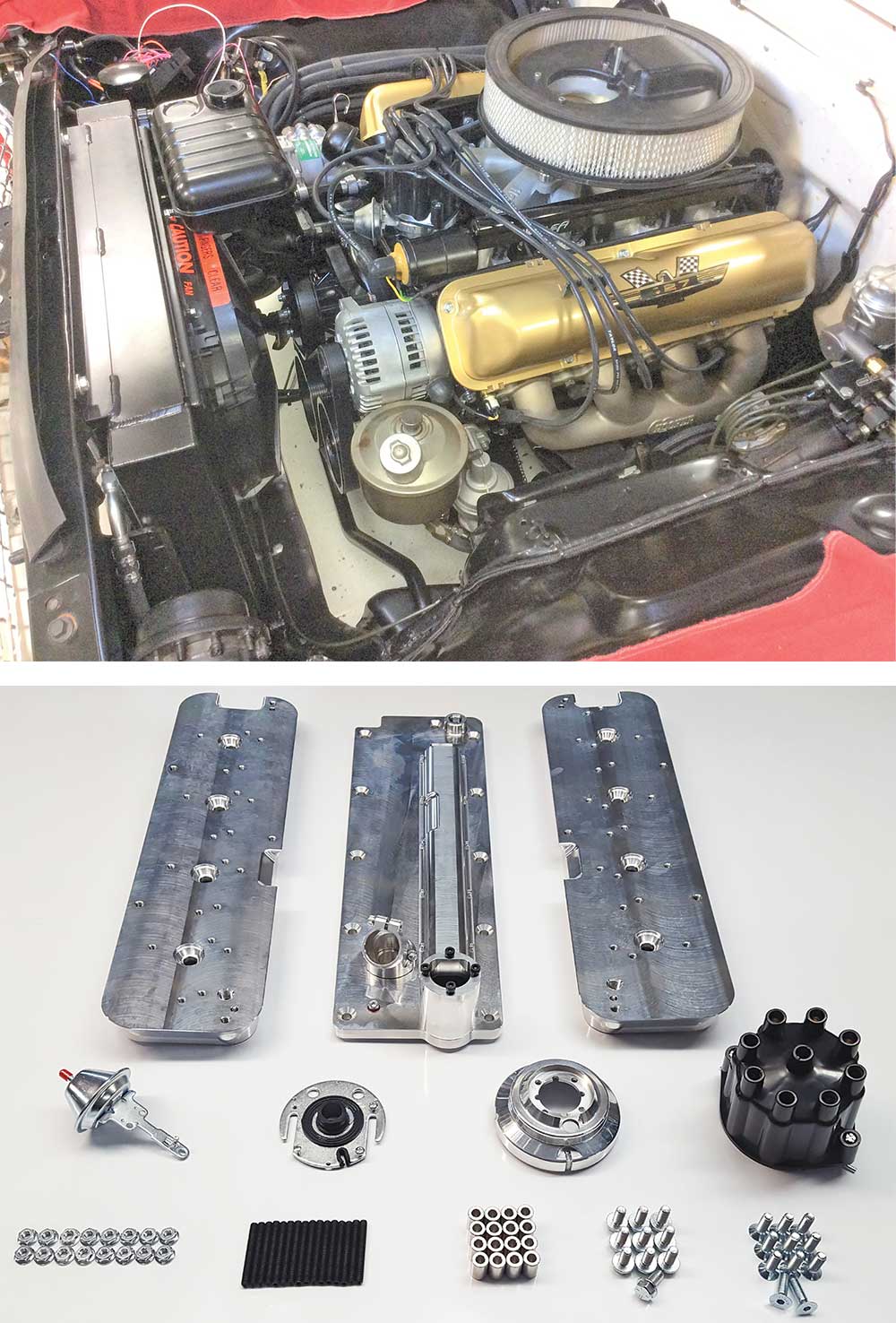
Transforming your LS engine to give it the appearance of a Ford FE from the ’60s is now a great deal easier. You can convert your LS3 or LS7 and make it look like the Blue Oval pushrod V-8 monster FE you really want, all the while maintaining the LS modern performance.
The Bowler Performance FE conversion package (PN VALLEYCP-FORD priced at $1,800) includes the valley cover, valve cover adapters, distributor cap conversion (8mm plug wires not included), and all necessary hardware. The conversion kit parts are machined from 6061 billet aluminum and shipped in a raw finish, allowing you to custom paint or powdercoat to your engine’s color scheme.
Designed for use with the Gen IV LS3 and LS7 engines, you can now use your existing period-correct FE valve covers, air cleaner top, and oil fill tube with this package to enhance the visual “punch.” Bowler Performance recommends using this in conjunction with the LS Classics by Lokar intake and lower air cleaner adapter for the best look.
For more info, check out Bowler Performance Transmissions by calling (618) 943-4856 or visit www.bowlertransmissions.com.


Dakota Digital adds to its RTX series of instrumentation with fitment for the 1959-1964 Chevy Impala, Bel Air, and Biscayne. It’s all about the stock look with late-model features to enhance gauge operation. What appears to be original equipment comes to life with the LED backlighting in your favorite color scheme, thus removing all doubts.
When opening the vehicle’s door, the vintage-looking rolling odometer provides a stock appearance. Turning on the ignition, the TFT message center can be fully configured to display just about any piece of information needed, from the complementary home screen layout to the user-configurable data group screens.
Starting from scratch, a CNC-machined housing is filled with electronics designed and built in-house, helping Dakota Digital once again raise the bar for aftermarket instrumentation. Bluetooth integration, GPS technology, and RGB backlighting with a full-color TFT screen provide the technology that you want.
For more info, check out Dakota Digital by calling (800) 852-3228 or visit www.dakotadigital.com/RTX.
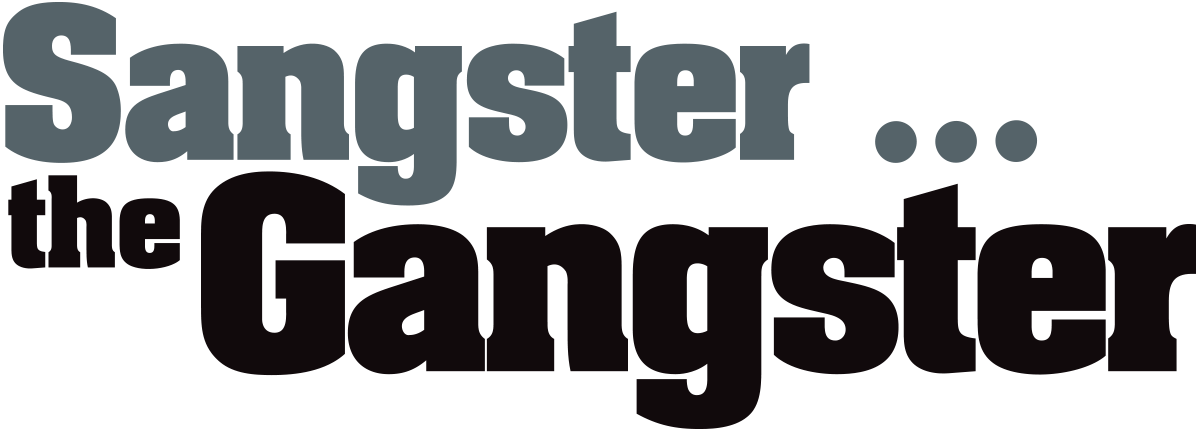
eing a four-door was never easy.
Though favored by new-car buyers, their family car image made them decidedly uncool among enthusiasts. With very few exceptions, four-doors got treated as parts harvests to build roadsters, coupes, and even two-door sedans.
Then something happened that nobody really expected: that pool of buildable roadsters, coupes, and two-door sedans dried up and people started doing something very unexpected: thinking of four-doors in downright favorable terms. Then Don Sangster did something he admits he never would’ve dreamt of doing. “I told John (John Barbero at Pyramid Street Rods) that I’d like to do a Deuce highboy Fordor,” he says. “And I wanted a Nailhead in it.


eing a four-door was never easy.
Though favored by new-car buyers, their family car image made them decidedly uncool among enthusiasts. With very few exceptions, four-doors got treated as parts harvests to build roadsters, coupes, and even two-door sedans.
Then something happened that nobody really expected: that pool of buildable roadsters, coupes, and two-door sedans dried up and people started doing something very unexpected: thinking of four-doors in downright favorable terms. Then Don Sangster did something he admits he never would’ve dreamt of doing. “I told John (John Barbero at Pyramid Street Rods) that I’d like to do a Deuce highboy Fordor,” he says. “And I wanted a Nailhead in it.
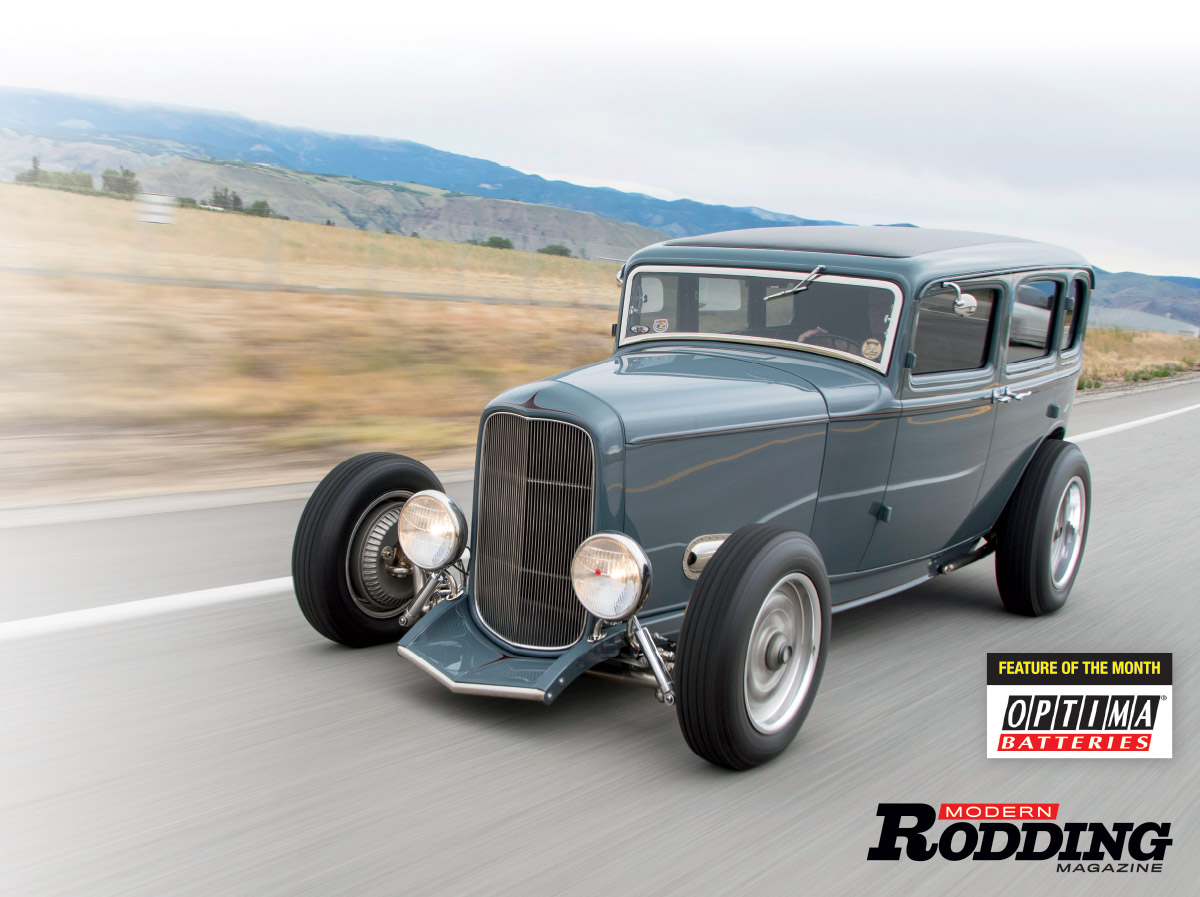
He found his as a body down in Texas. “The guy bought it as a complete car and replaced that Fordor body with a roadster body,” Don says. “So, I had it shipped to Barbero’s place. It was nice.”
Barbero sent the body over to Ryan Schmitt for metalwork while he built the chassis. He spanned American Stamping Rails with a Model A–style crossmember up front and round tubing everywhere else. He achieved the front stance with a 5-inch Magnum tube axle and reversed-eye spring. Swivel shackles pin the axle to an Industrial Metal Craft split wishbone. A Vega-style box steers it. Hot Rod Brake Company Kinmont-style discs stop it.
A Winters V-8–style quick-change axle mounts to the chassis with Ford radius rods that Barbero modified to meet the outside of the frame. A pair of Strange adjustable coilovers suspends the chassis over the axle.


here’s something to say about knowing exactly what you want.
“I had a 1956 Chevy Bel Air when I was a kid,” Mick Blaine says. “I guess during my second or third midlife crisis I decided to find a 1956 Chevy just like that one.” He cast his net across the country. Despite his best efforts, the best he could find was a 1955 Chevy. But it was something special. And it was practically his backyard. “I bought it on the spot.
“It had a modern V-8 and a Muncie, but it was all-original otherwise,” he continues. Delighted with his find, he tooled around in his newfound Bel Air for the following year.
“It was horrible to drive,” he laments. “Cars back then didn’t drive the way they do now. You get used to new cars, so when you step into an old car after driving a modern car, you hate it. I did, anyway.”

here’s something to say about knowing exactly what you want.
“I had a 1956 Chevy Bel Air when I was a kid,” Mick Blaine says. “I guess during my second or third midlife crisis I decided to find a 1956 Chevy just like that one.” He cast his net across the country. Despite his best efforts, the best he could find was a 1955 Chevy. But it was something special. And it was practically his backyard. “I bought it on the spot.
“It had a modern V-8 and a Muncie, but it was all-original otherwise,” he continues. Delighted with his find, he tooled around in his newfound Bel Air for the following year.
“It was horrible to drive,” he laments. “Cars back then didn’t drive the way they do now. You get used to new cars, so when you step into an old car after driving a modern car, you hate it. I did, anyway.”
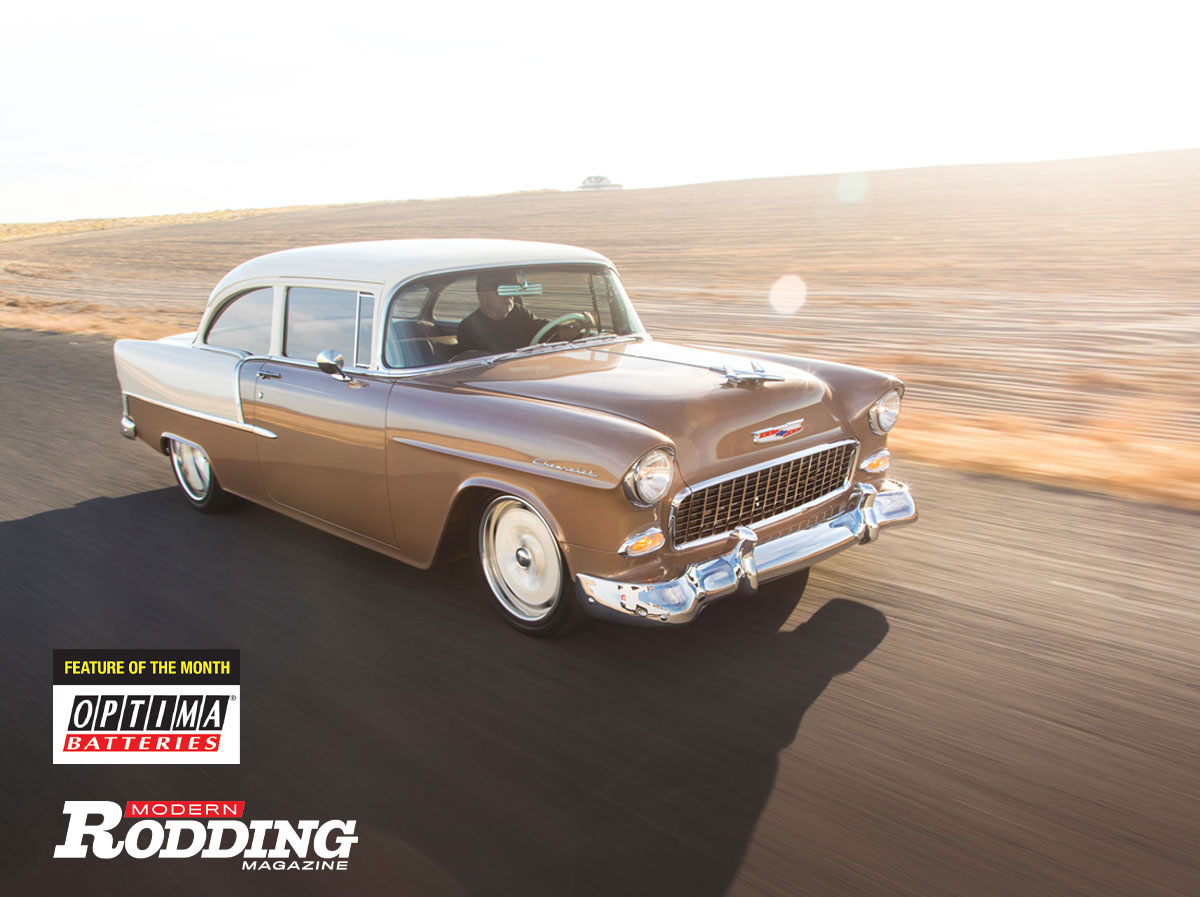
Mick appealed to Eddy Whipple at Whipple Motorsports Speed & Custom in Spokane to align the car with his expectations. “I gave him an outline: Keep the exterior stock except for wheels and make it drive more like a modern car,” he says. “I suspected that I wanted an Art Morrison chassis, so we started there.” It’s the company’s flagship GT Sport with all the trimmings: clean-sheet IFS with Strange coilovers, mandrel-bent frame, four-linked 9-inch rear axle, and Wilwood disc brakes.
Mick has a Corvette with an LS3. “I like that engine,” he notes. “I expected this one to look just like the one in the Corvette, and at first it did. And I’ll admit, it was ugly.
“But [Whipple] pushed for this stack induction,” he continues. “At first, I had no idea what a stack induction was, much less what it does for an engine. But I trusted [Whipple]’s judgment.” Southern Performance Systems supplied the engine with a Chevrolet Racing Hot Cam and an Inglese system. Whipple dolled it up with Clayton Machine Works rocker covers and a Concept One accessory drive. “Mick wanted a five-speed, which was great because we’re all about manual transmissions here,” Whipple says. “But if you go that far, why not a six-speed?
“At that point the car was everything anybody would’ve wanted in a car like this,” he continues. “Then he said, ‘Let’s blow it apart and make it nice.’ Our other customers thought the car was already done. I mean it came to us with a Goodguys pick sticker on the headlight! The guy’s nuts!”

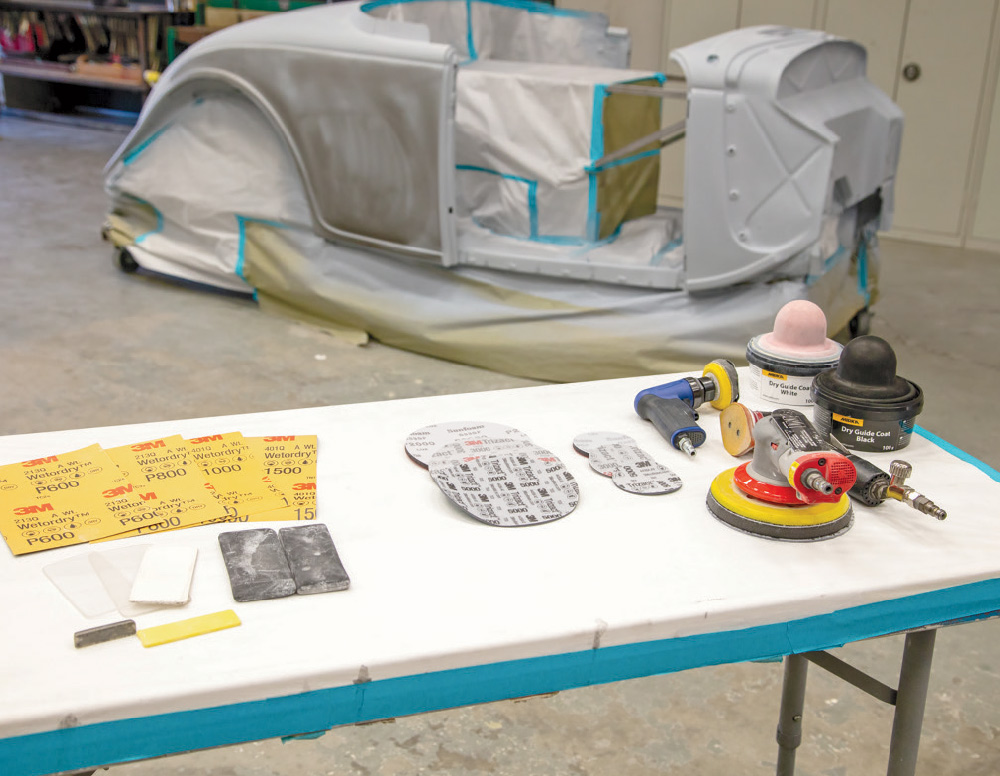
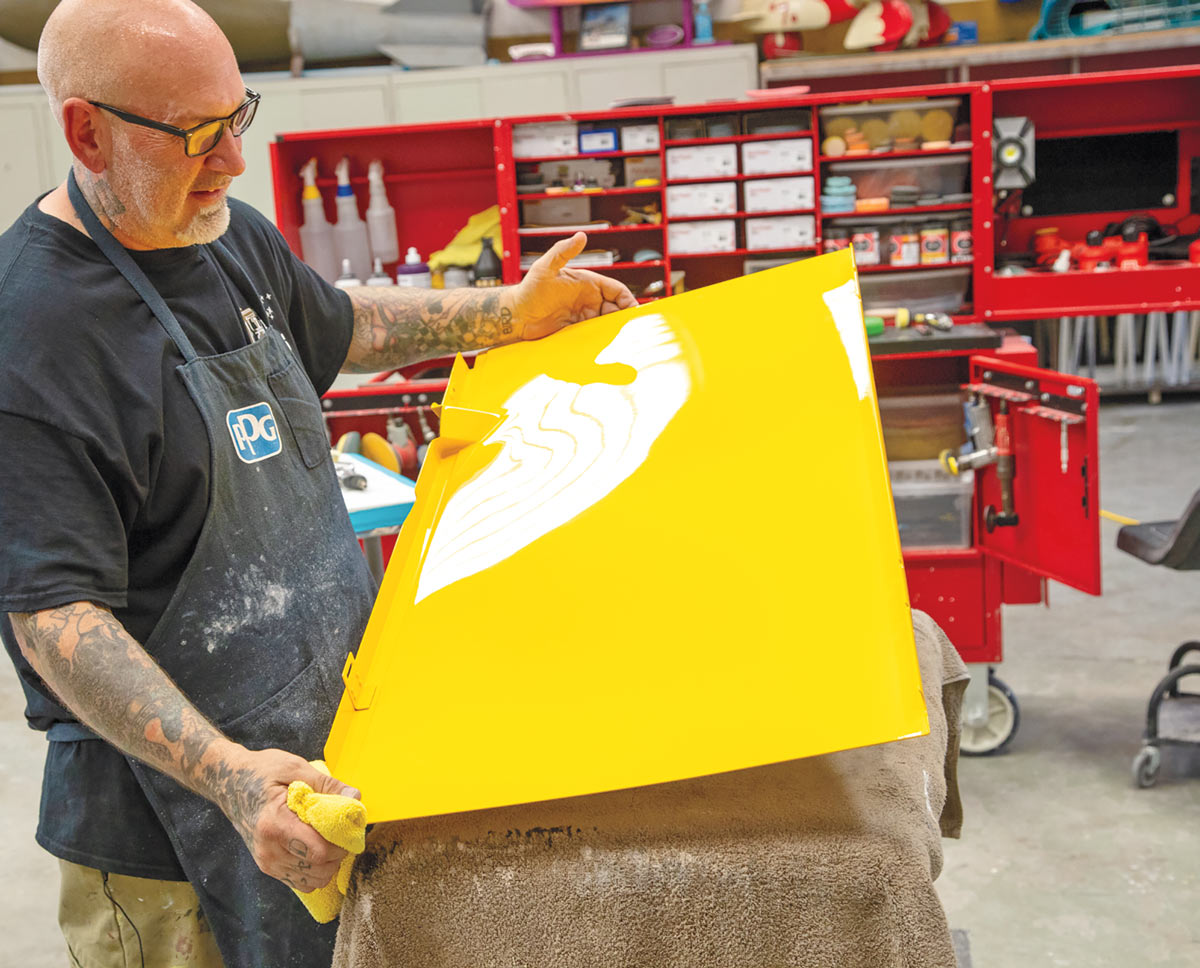

he perfect shine. Easy to say but not-so easy to achieve. All of us, regardless of the level of paint our hot rod sports, thoroughly enjoy keeping it all bright and shiny. We wander out to the garage and put in the time as often as we can to dust and polish our hot rod, looking to achieve the perfect shine. Of course, some of us try our darndest, but the end result is still anywhere from a 15- to 50-foot shine … meaning don’t get too close.
Given each of us has washed, waxed, polished, and tried everything else under the sun to make our pride and joy gleam, the fact remains oftentimes we miss the luster we want to achieve. I like to think of myself as a dedicated hot rodder and have spent many an hour cutting and polishing but the fact remains there was always something “missing” in the process. I would sand and sand then chase around scratches like a cat chasing its tail. Then off to the buffer and make it shine, but still it wasn’t quite right. I was correct, I needed to be taught a thing or two, so I felt like I should talk to a pro.
Knowing this I thought it best to visit one of the premier painters, and fellow hot rodder, in the country who understands what it takes to achieve the perfect shine; and he might just know a thing or two about making a hot rod shine. We visited Darryl Hollenbeck of Vintage Color Studio in Concord, California, a longtime hot rodder and painter who has spayed numerous award-winning hot rods. In fact, back in 2016, he built an America’s Most Beautiful Roadster winner himself with his 1932 Ford highboy roadster.

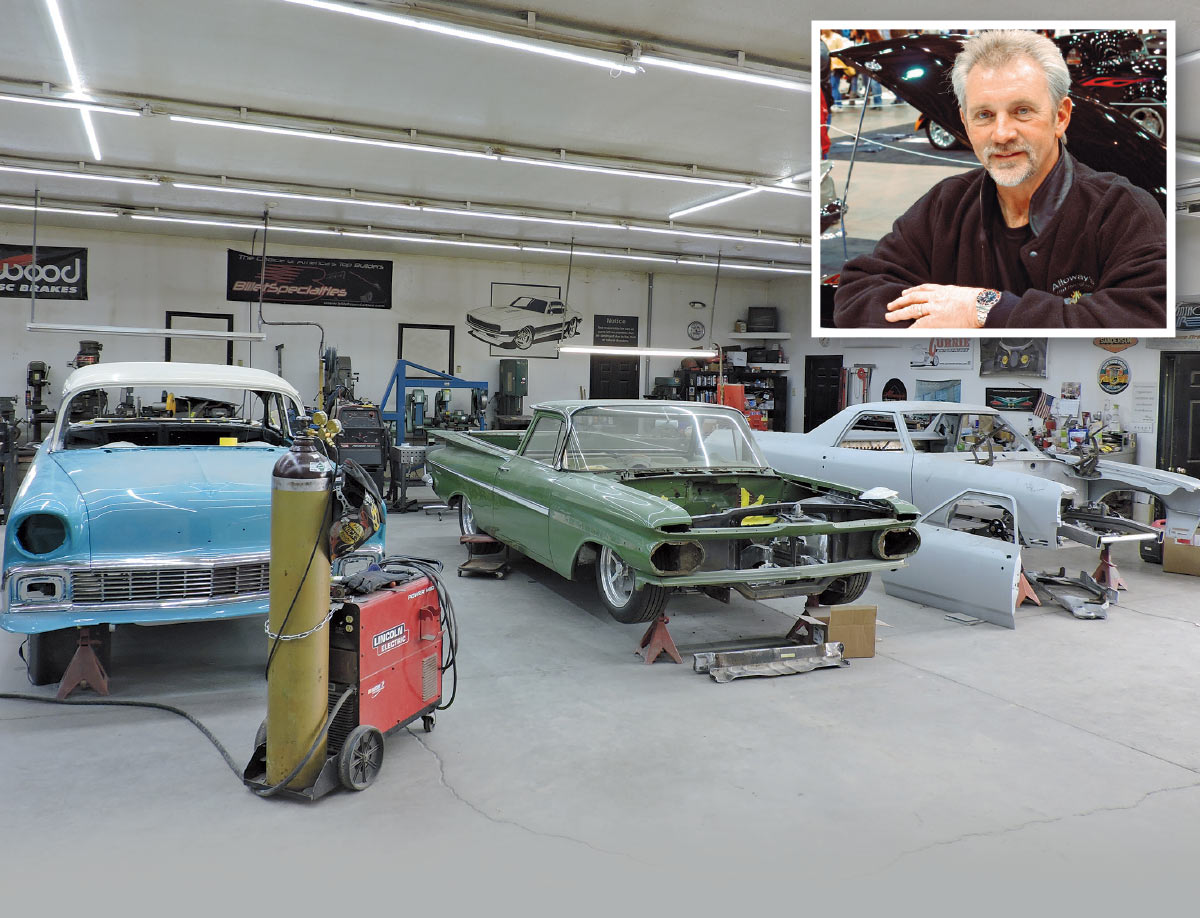
or some reason I am always interested in that first car. Bobby Alloway’s first car was a 1956 Ford “post car.” It was quickly replaced with a 1965 Plymouth Sport Fury with a 426 wedge underhood, followed by a 1970 AAR ’Cuda. He enjoyed these muscle cars and still has a great appreciation for the muscle car era, but in the early ’80s he was drawn back to the classic Ford hot rods, particularly the Model 40, 1933 and 1934 Fords. After some changes at his “day job” he decided to open a hot rod shop in Louisville, Tennessee; this was in 1992. And the rest, as they say, is history—but history doesn’t happen overnight.
Over the past 40 years or so there have been several milestone cars/hot rods that put Alloway “on the map.” There was the super-slick 1933 Vicky that won the Ridler in 1985, and then 10 years later when Alloway’s own flamed three-window coupe and Tom Clark’s matching flamed roadster visually and figuratively set the street rod world aflame. First impressions are often indelible. The image of those two black flamed hot rods roaming the country together forever cemented the Alloway image for me and many others. Say Bobby Alloway and black with flames comes to mind. That vision would be short-selling Alloway and the entire crew at Alloway’s Hot Rod shop, as they build diverse makes, models, and years of hot rods. Like most shops, cars of the ’50s and ’60s are now fair game, and cars such as Kathy Lange’s Painless Performance/Street Rodder Street Rod of the Year–winning 1958 Edsel prove the point. Currently, there are three Chevy El Caminos under construction in the shop (one 1959 and a pair of ’70s) along with a C2 Corvette, and while the body styles may range from a Deuce roadster to a 1958 Impala, they all have some common traits. First and foremost is quality; every car to leave the shop is built to an incredibly high standard. Second is functionality. Alloway-built cars can take to the open road. Third is the whole wheel/tire combination and that wicked stance that defines the “Alloway look.” Just the fact that the “Alloway look” exists is a testimony to the man and his shop.

his year was the 70th America’s Most Beautiful Roadster (AMBR) award (correct, 70th award and the 71st show) and it went to the 1932 Ford Muroc fenderless roadster owned by Monty Belsham (Houston, British Columbia, Canada) that was reconfigured by Doug Jerger and his crew from Squeeg’s Kustoms in Chandler, Arizona. The 2020 Grand National Roadster Show (GNRS) held at the Fairplex in Pomona, California (17th year at this location), did bring us the latest in the long tradition of AMBR award winners.

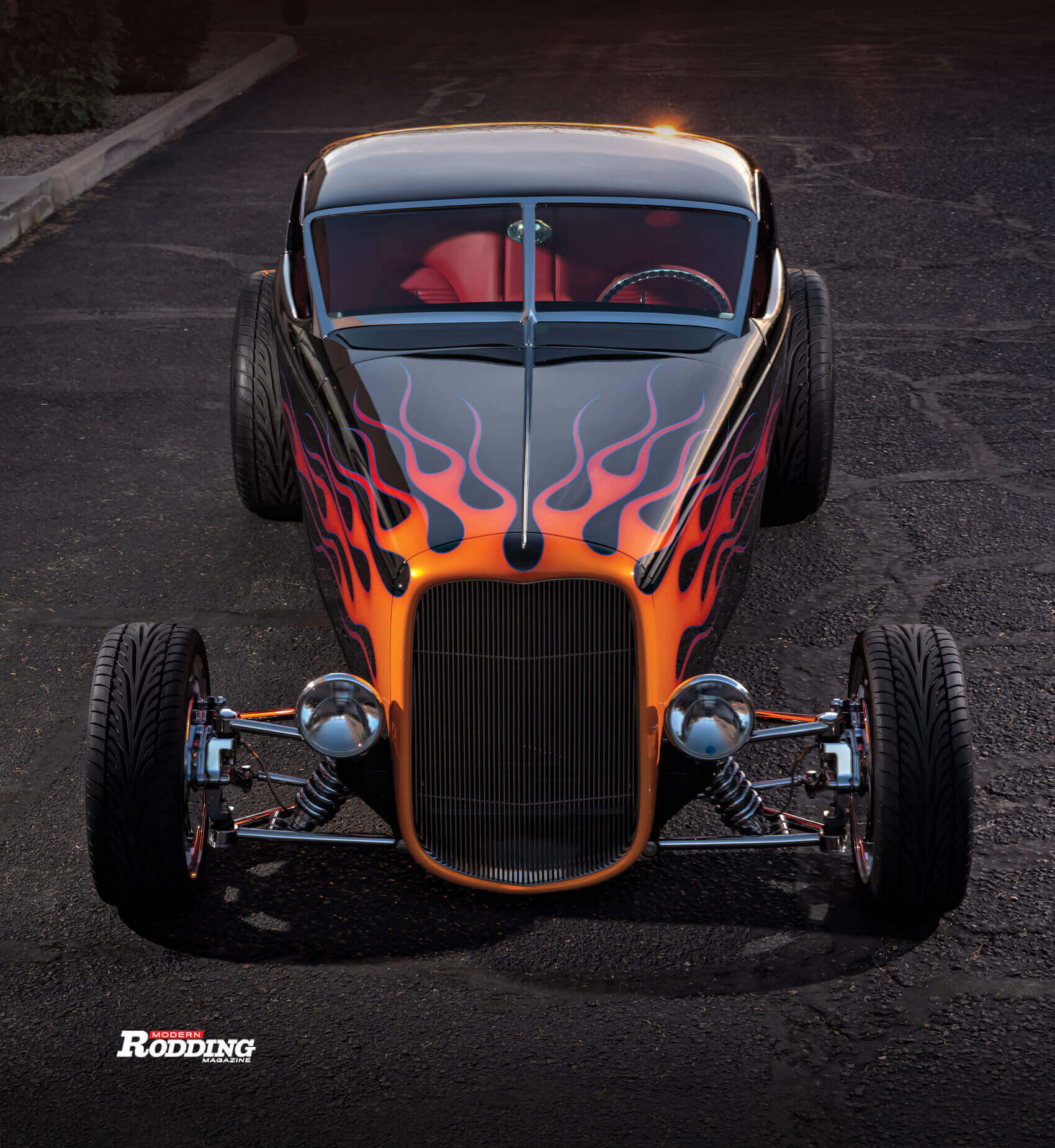

his year was the 70th America’s Most Beautiful Roadster (AMBR) award (correct, 70th award and the 71st show) and it went to the 1932 Ford Muroc fenderless roadster owned by Monty Belsham (Houston, British Columbia, Canada) that was reconfigured by Doug Jerger and his crew from Squeeg’s Kustoms in Chandler, Arizona. The 2020 Grand National Roadster Show (GNRS) held at the Fairplex in Pomona, California (17th year at this location), did bring us the latest in the long tradition of AMBR award winners.

here’s one distinct advantage to any enclosed street rod: you are in charge of the weather, sort of. Truthfully, a closed car with a cool, heat, and defrost system is something we take for granted on our everyday drivers but it’s something we have to engineer into our hot rods.
It was back in 1976 when I first became aware of aftermarket A/C kits for hot rods. I was sweating my way through the NSRA Nats in Tulsa, Oklahoma, when I happened upon Jack Chisenhall with his card table covered in A/C parts. He proceeded to tell me these would fit any number of hot rods, giving rodders something akin to control over heat and humidity. All of us at one point have experienced summer humidity and heat and we truly understand how stifling it can be. A little A/C goes a long way toward maintaining our mindset of “having fun with cars.” A big “thank you” to Vintage Air (VA) for initiating the A/C portion of our industry some 46 years ago.
When it comes time to keep cool or, dare I say, stay warm inside our street rod, there’s a proven method. While this story has some of the goodies on installing an A/C system, we will spend time looking at the louvers (vents/registers as they’re sometimes called) that direct the airflow to make you more comfortable. In today’s world of street rods, it’s commonplace and no longer an afterthought that cars are now built with a heat, cool, and defrost system; we rodders shorten it up by saying the A/C.
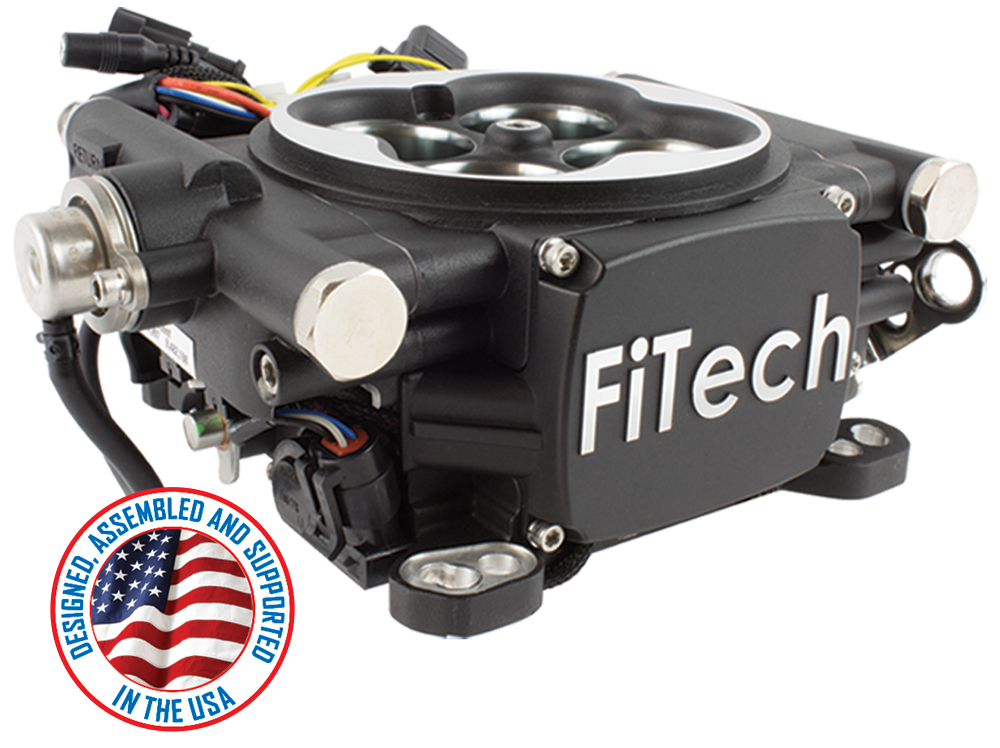
 Fuel Delivery Solutions
Fuel Delivery Solutions High Output Ignitions
High Output Ignitions Trans Controls & More
Trans Controls & More
 Fuel Delivery Solutions
Fuel Delivery Solutions High Output Ignitions
High Output Ignitions Trans Controls & More
Trans Controls & More
 Fuel Delivery Solutions
Fuel Delivery Solutions High Output Ignitions
High Output Ignitions Trans Controls & More
Trans Controls & More

he Ford Mustang is an iconic brand. When it comes to the “leader board” there’s no denying the Steve McQueen “Bullitt” 1968 Mustang GT fastback comes in as an indisputable #1. Next on our list, and following closely, is the John Wick 1969 Boss 429 (yes, we know it’s not the real deal but hey!). These two get our votes as all-time favorite Fords and all-brands movie cars.
From here the list becomes crowded and personal opinions take over. There are any number of famous ’Stangs but among us mere mortals we have our lists. Residing particularly close to the top of the list is the Florida-based, Coyote-powered 1968 Ford Mustang fastback belonging to Yaniv Sananes. This potent Pony was built under the watchful eye and guiding hands of Andy Leach of Cal Automotive Creations housed in Bennington, Nebraska, including heaps of inspiration from the artwork by Gary Ragle.


Speaking of the tire and wheel combo, you’ll find Michelin Pilot Sport 245/35R18 rubber in front with 285/35R19 in back wrapped neatly around Forgeline Grudge Heritage Series wheels in a machine finish that measure 18×8 forward and 19×12 rearward. In order to get this much “rubber to the road,” a pair of Detroit Speed rear tubs were installed at Cal Automotive Creations.


f you’ve ever been on the floor of your garage with your old car on jackstands, you’ve probably noticed a few problem areas. It seems that 50-plus years of service can take a toll on certain components, and with our 1964 Chevelle project car, it was obvious that we had some serious wear as we disassembled the car to swap the original drum brakes for a Classic Performance Products (CPP) disc brake system.
Suspension upgrades and installs are typically a “can of worms” because you’ll eventually replace every component under the car by the time you reach a stopping point. Such is the case with our Chevelle four-door sedan, as we noticed severe ball joint sloppiness and lots of crumbly, dry rubber where the control arm bushings are supposed to live. It would’ve been silly to reassemble the car with those ailing components beneath it, so we grabbed our favorite screwdriver and peeled open the can of worms.

Highboy Roadster
Brookville-Bodied, Coyote-Powered Deuce
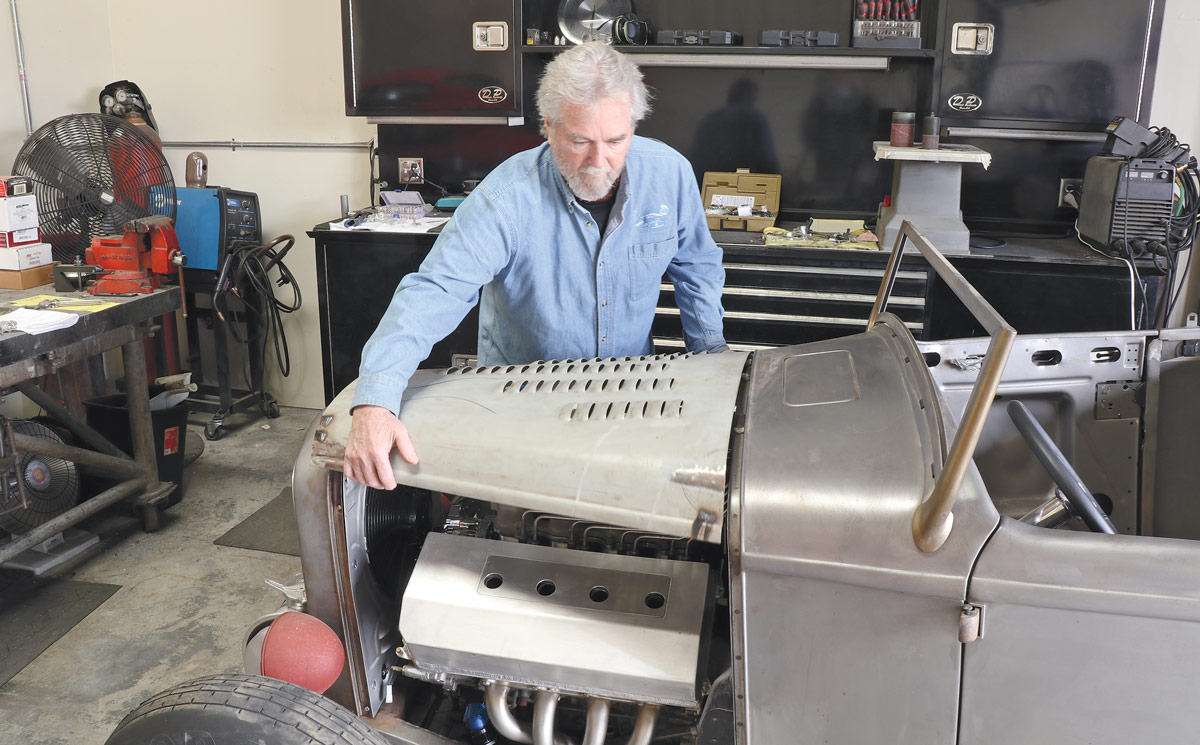
ight about now there’s probably more going on in hot rod garages all across this country than has occurred in some time … possibly ever! Bold statement for sure but the current quarantine has many of us looking for something to do … to keep our sanity. It’s not that hot rodding is more popular, it’s just there can be no denying there’s lots going on and there are more rodders building more cars (and trucks) than at any other time.
Ken Thurm, a SoCal rodder and member of the California Roadsters, might just ring a bell with rodding magazine aficionados. In his lifetime he has built many a race car, muscle car, and street rod. During the past 20 years he has built five Deuces—three of them being our favorites, a highboy roadster, a highboy coupe, and a highboy sedan—that have all graced the covers and inside pages of the once-mighty street rod magazines. But alas, this is a new age and Modern Rodding is content to pick up what others have abandoned while taking a peek inside Ken’s garage to see what’s next.
Once again, Ken has opted to build what he likes, knows, and what he has had success with … 1932 Fords. The latest effort is based on a Brookville Roadster body. All of us would be remiss if we let our eyes pass over this highboy roadster too quickly. Here’s a chance to see the “eye candy” while it’s being made—and that’s surely a delight to the senses. Look closely, as you will see how much is already accomplished with these near-end results.
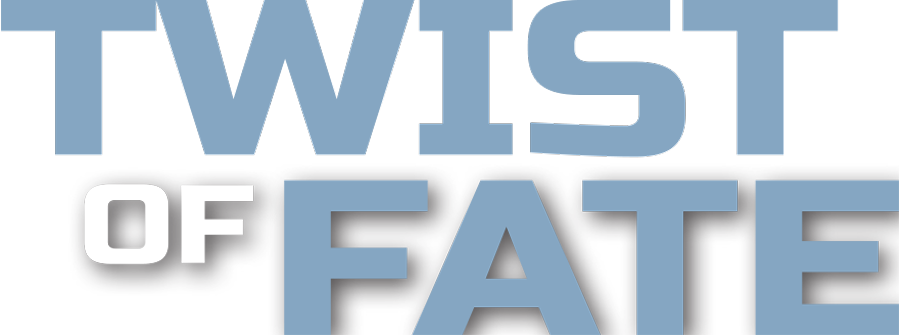
to This 1936 Ford Coupe
t’s often said that if something is meant to be that fate will eventually step in to make it happen. Such is the case for the humble beginnings of the seductive 1936 Ford three-window coupe with vintage 283 small-block Chevy pictured across these very pages. For Doug Klett of Plainville, Connecticut, it was a journey with many twists and turns that eventually brought the vintage steel starting point to his doorstep. Ever since he was a youngster, he spent plenty of Saturday nights shoulder-to-shoulder with his dad at Plainville Stadium Speedway. Watching modifieds wearing early coupe and sedan bodies tearing around the quarter-mile track lured him in with a fascination for ’30s-era Fords.


One night while cruising the web he located what seemed to be an extremely clean three-window coupe. The car was shown in bare metal and was a stalled project that was being offered up for sale. Without wasting a moment, Doug attempted to buy it, offering the owner the requested price, however, in the end, the seller decided to then keep the project. Obviously disappointed, Doug continued to watch for another car to become available. Two years later the very same car was advertised from a different owner for sale but he missed the chance by a day. Undaunted, he forged on for another year when the car was available again from yet another owner. He was finally able to swap cash for keys and get the old coupe delivered to his place, proving indeed that third time’s a charm.

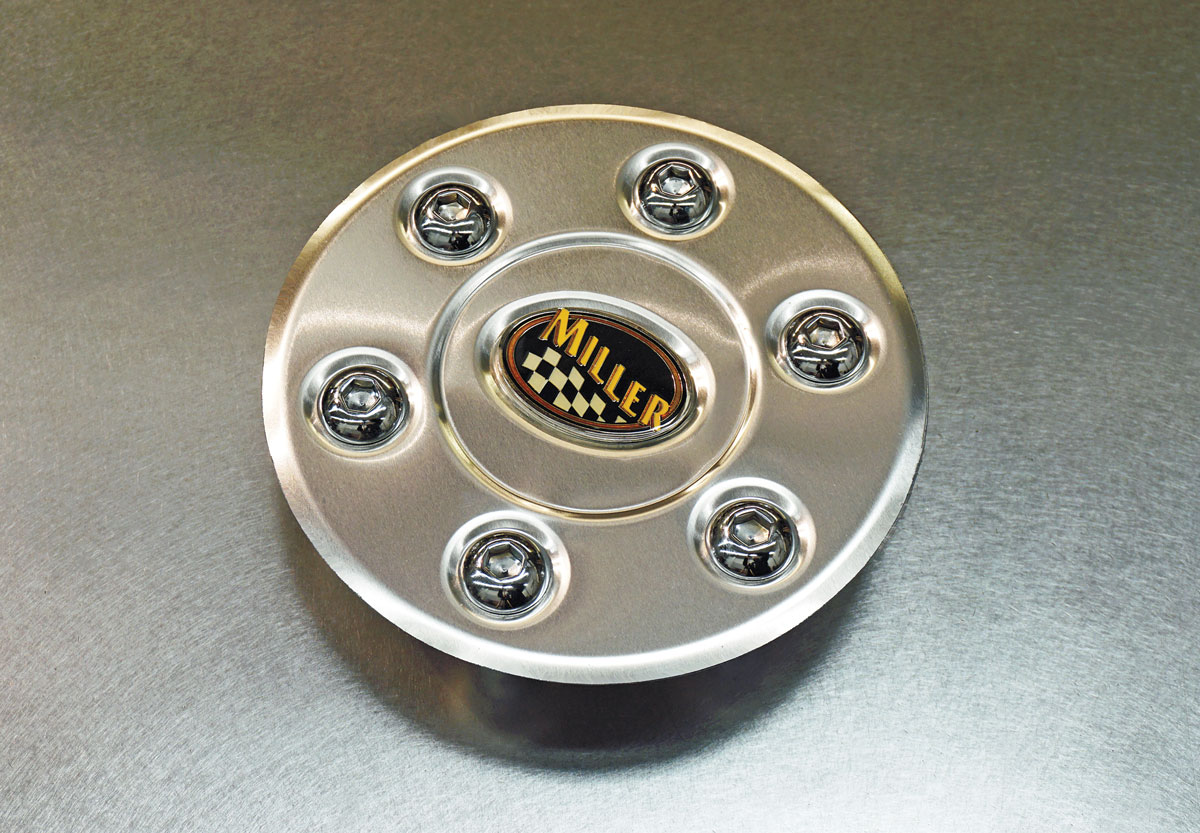
mbossing is the process of creating steps in sheetmetal panels. In this article I will show how you can add crisp details to panels with tooling that’s easy to make.
In most cases embossing is done with male and female dies. One die is placed above the metal and the other goes underneath. When the dies are pressed together, they create an embossed design in the shape of the dies.
Embossed patterns can be simple or complex. A circular shape is probably the simplest, and with any luck you may be able to use found objects (such as washers) for the dies. The dies need clearance between them (otherwise they will shear the metal); one of the challenges is aligning the male and female dies precisely. I’ll show some different ways to do this.
The first demonstration is designed to be as simple as possible and doesn’t require any welding or machining, only drilling and countersinking a few holes. The goal is to make a 1-1/4-inch-diameter recess in a piece of sheetmetal. I used flat washers for the dies, such as a standard 1-1/4-inch washer for the female die (which has an internal diameter of about 1-3/8 inch), and a fender washer with a 1-1/4-inch outside diameter for the male die. Both of these dies require a backing plate. I used 1/8-inch steel for the female die and 3/16-inch aluminum for the male.
View Index
View Index
